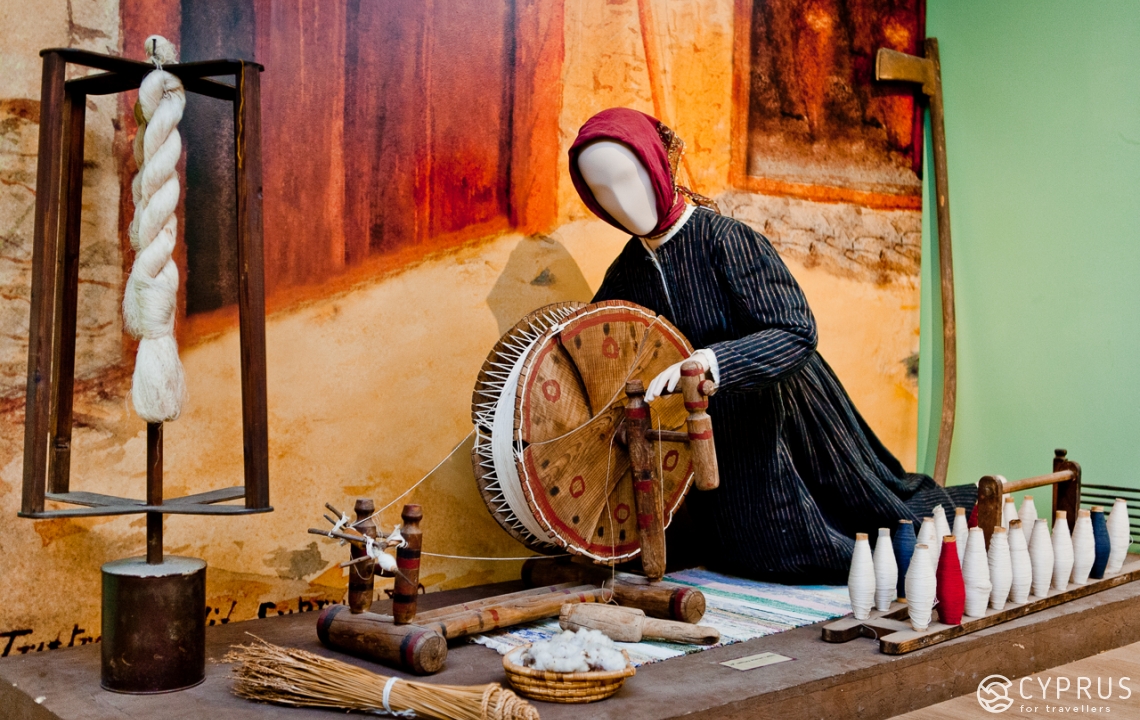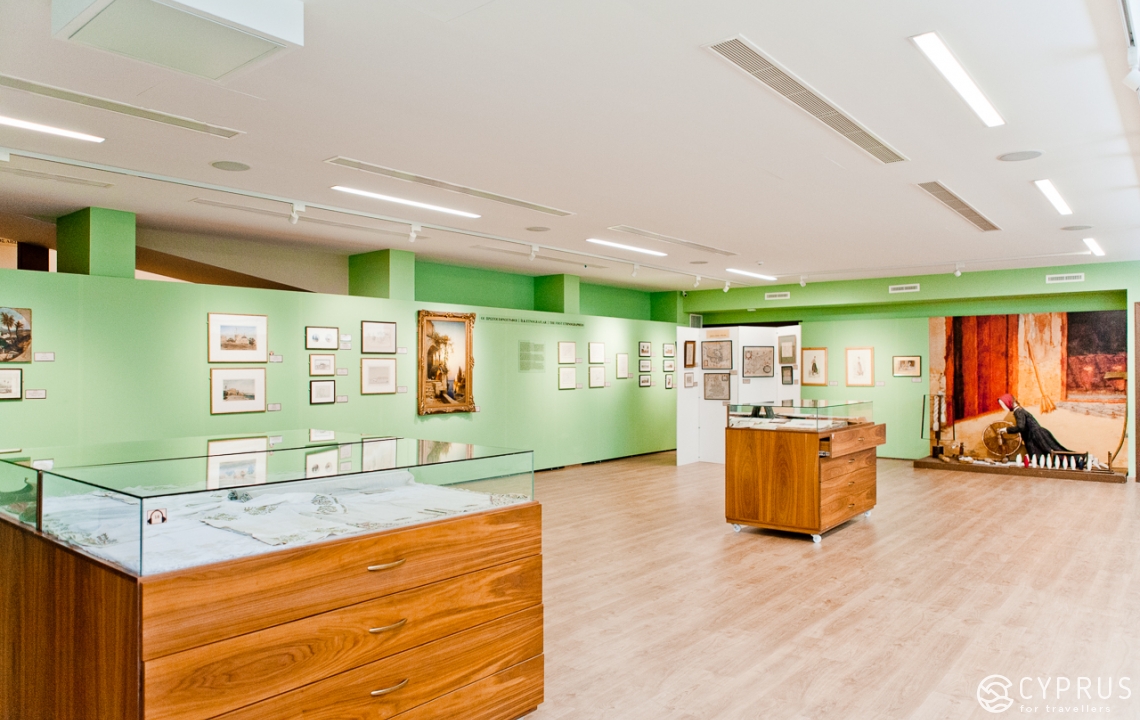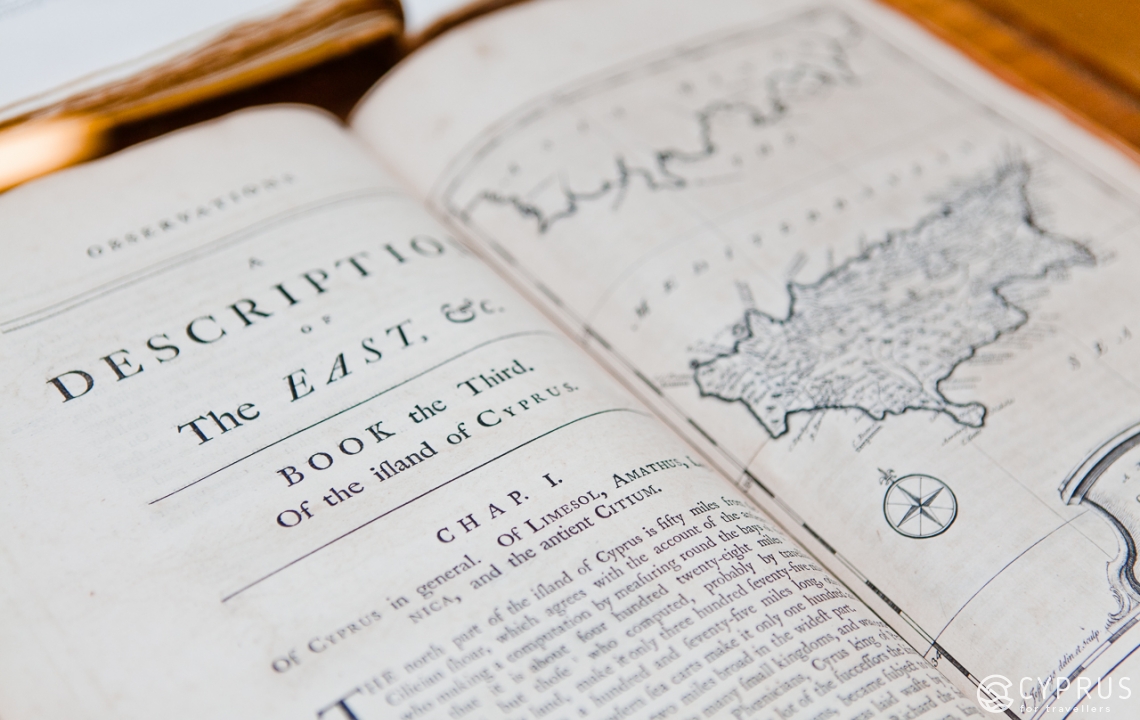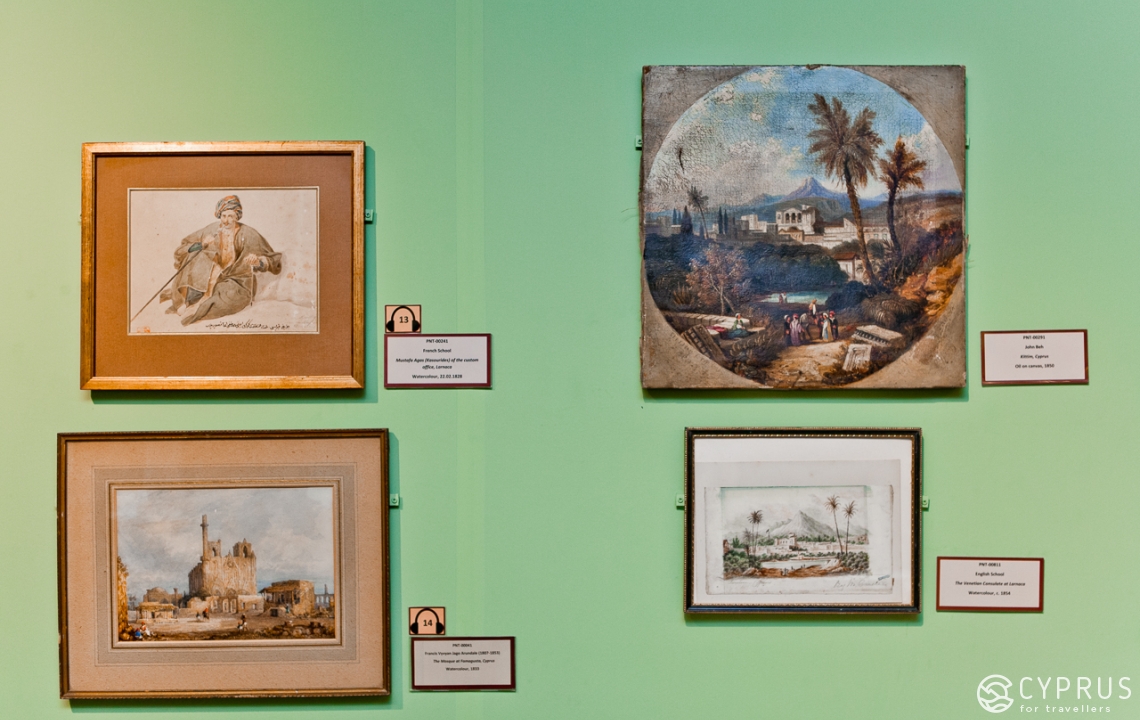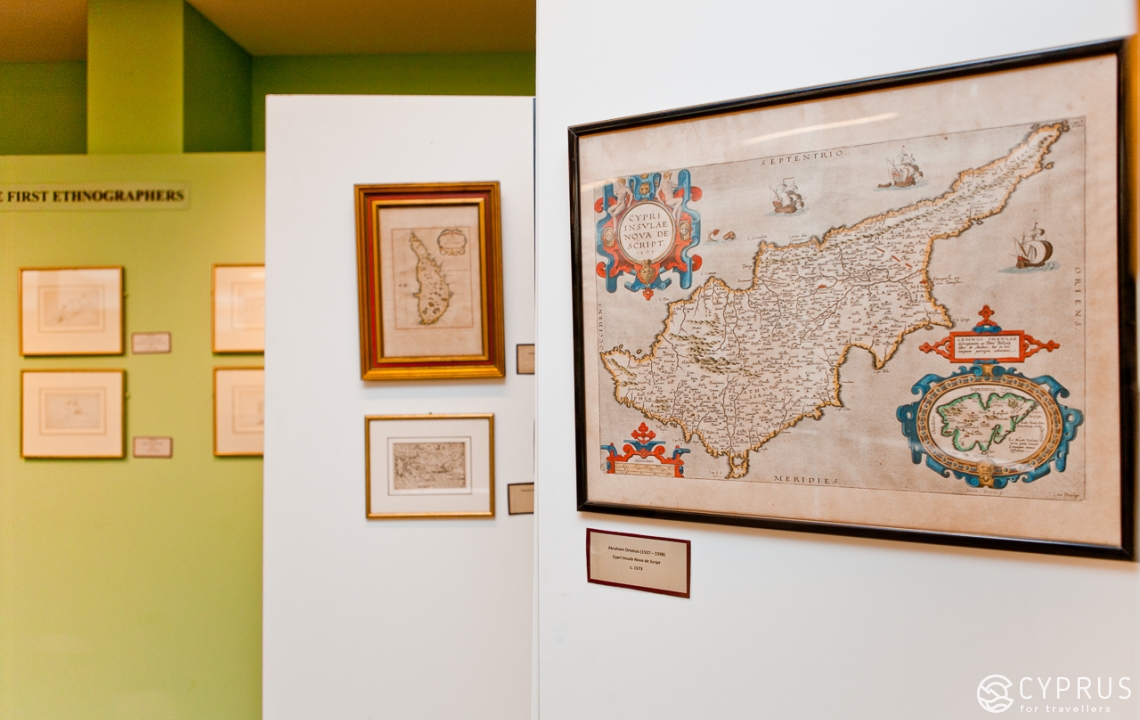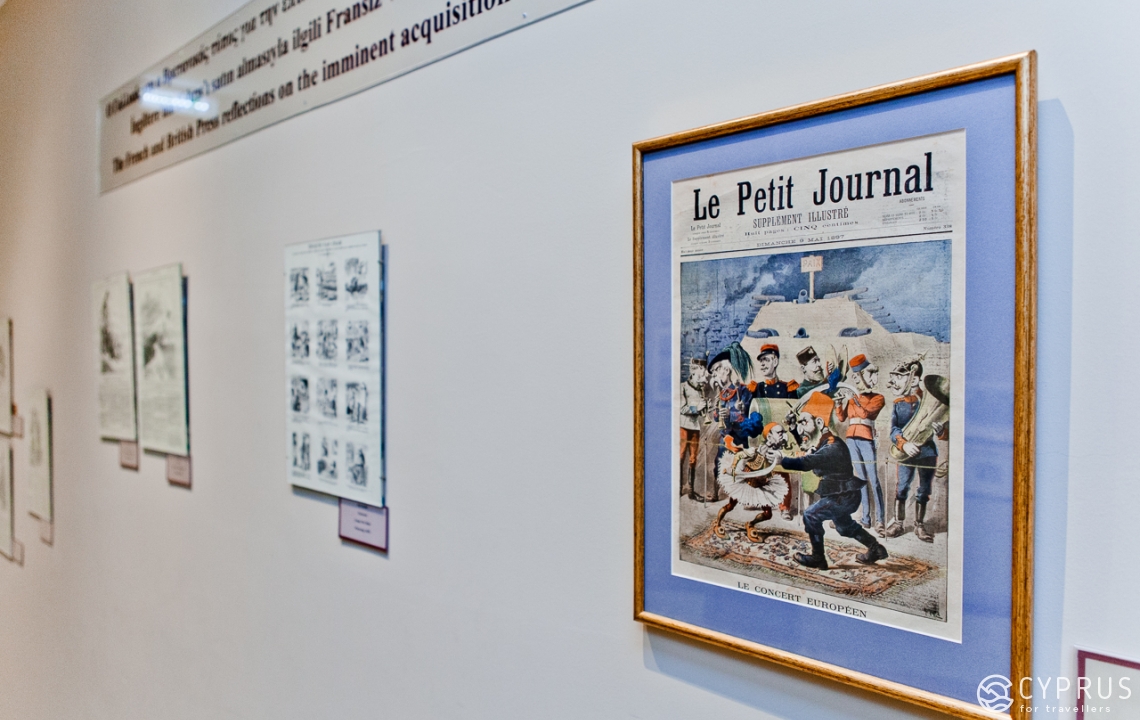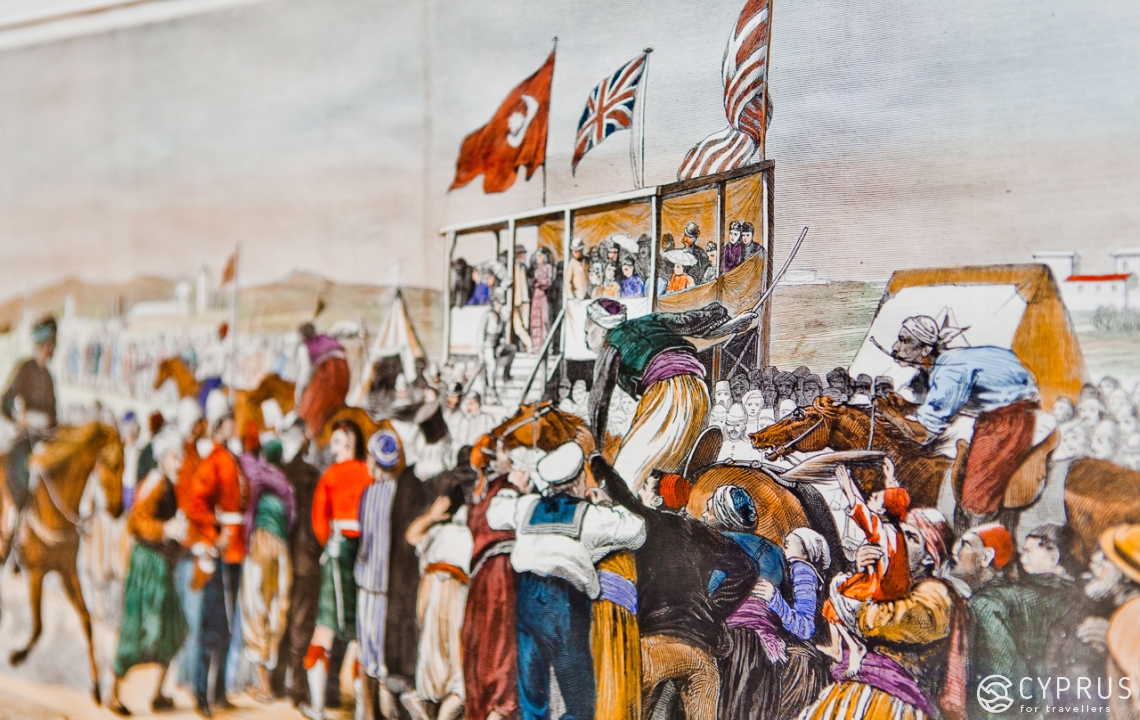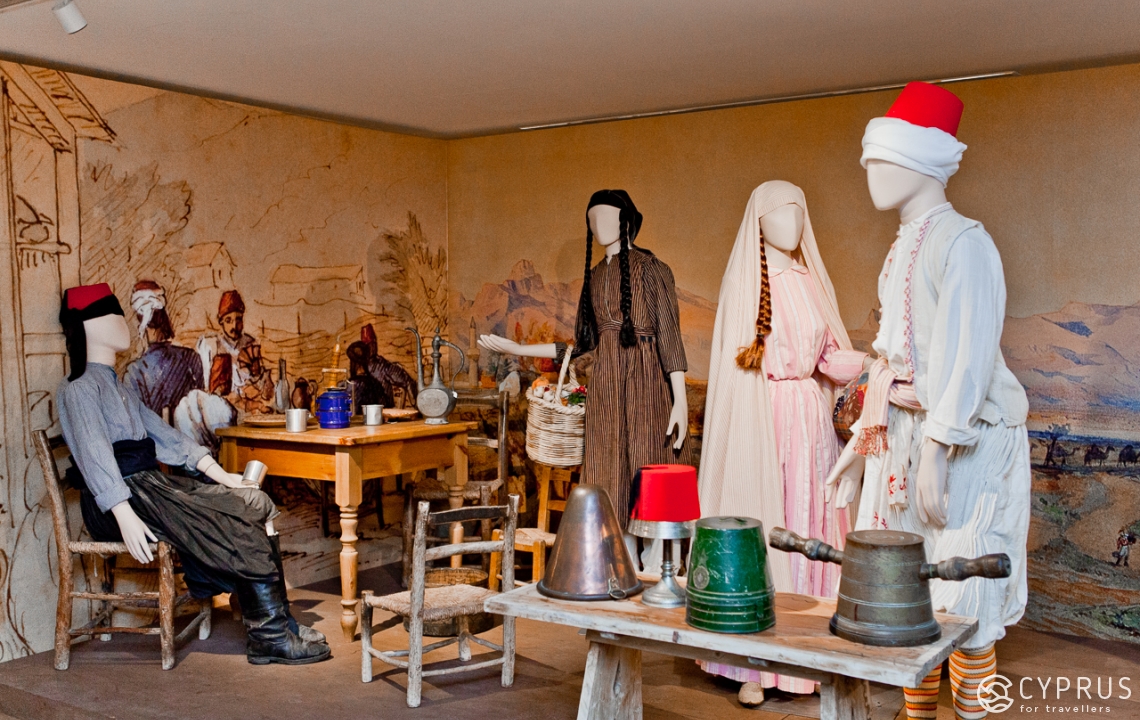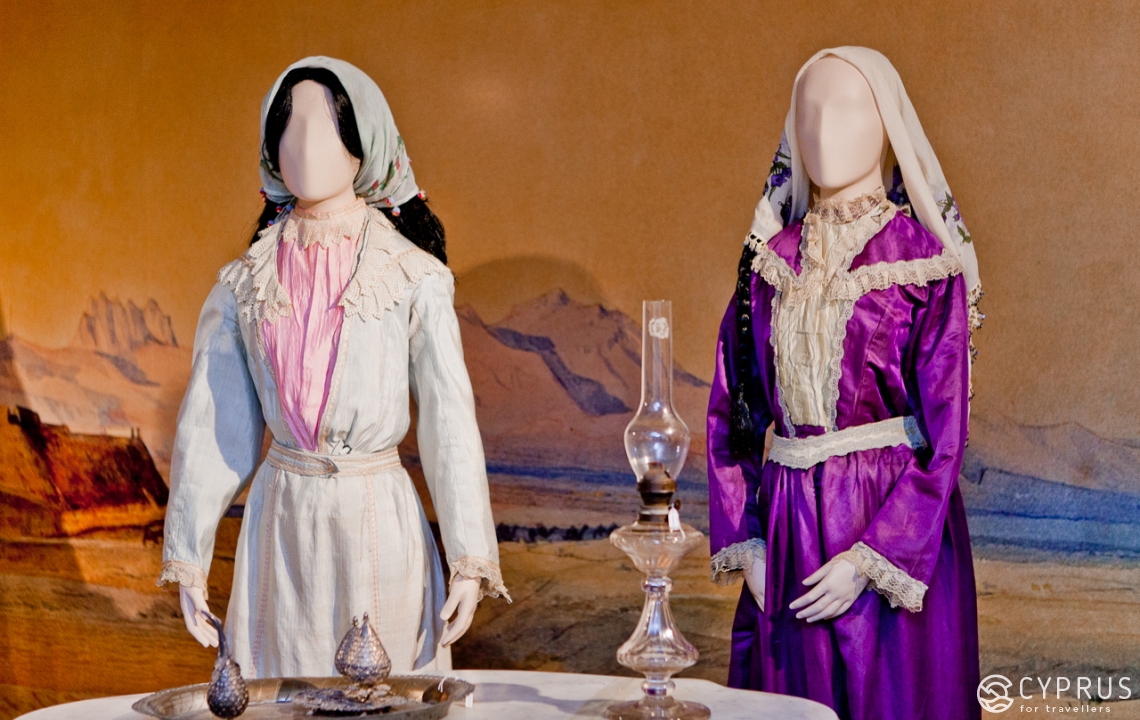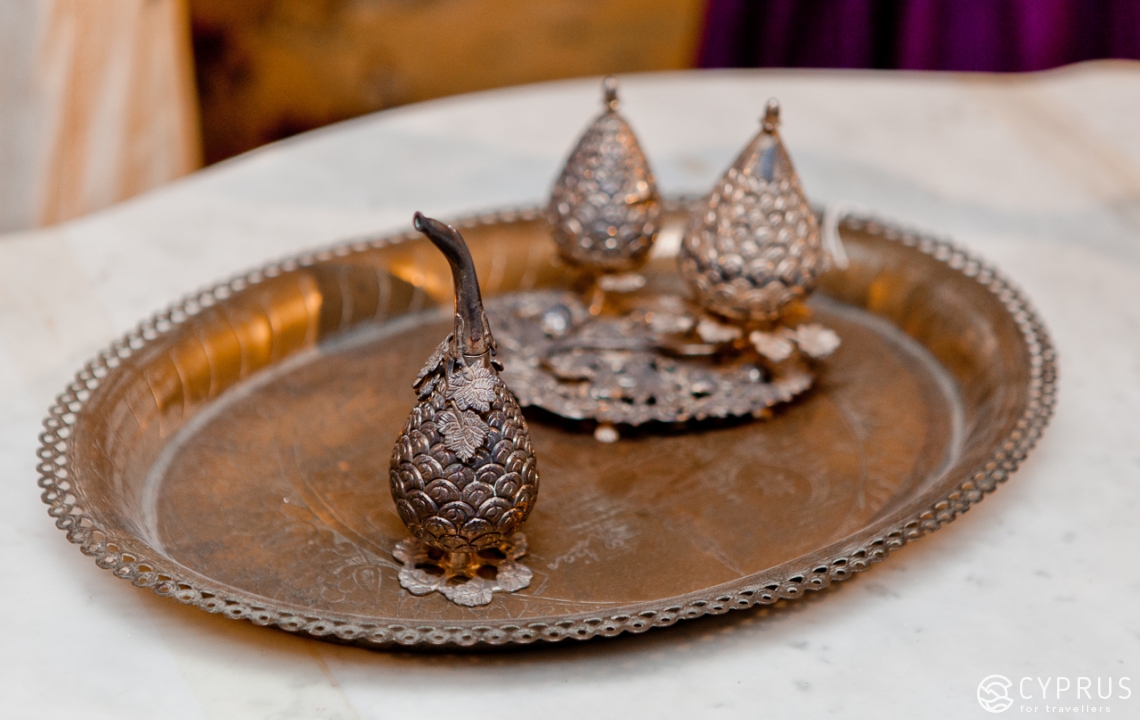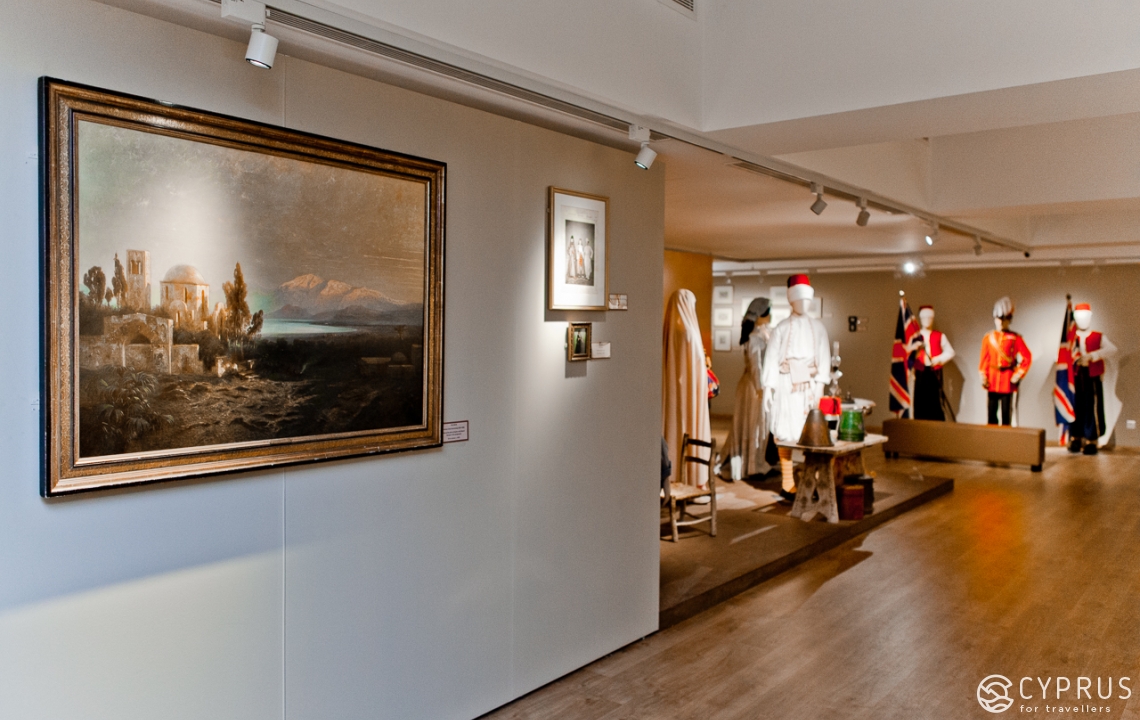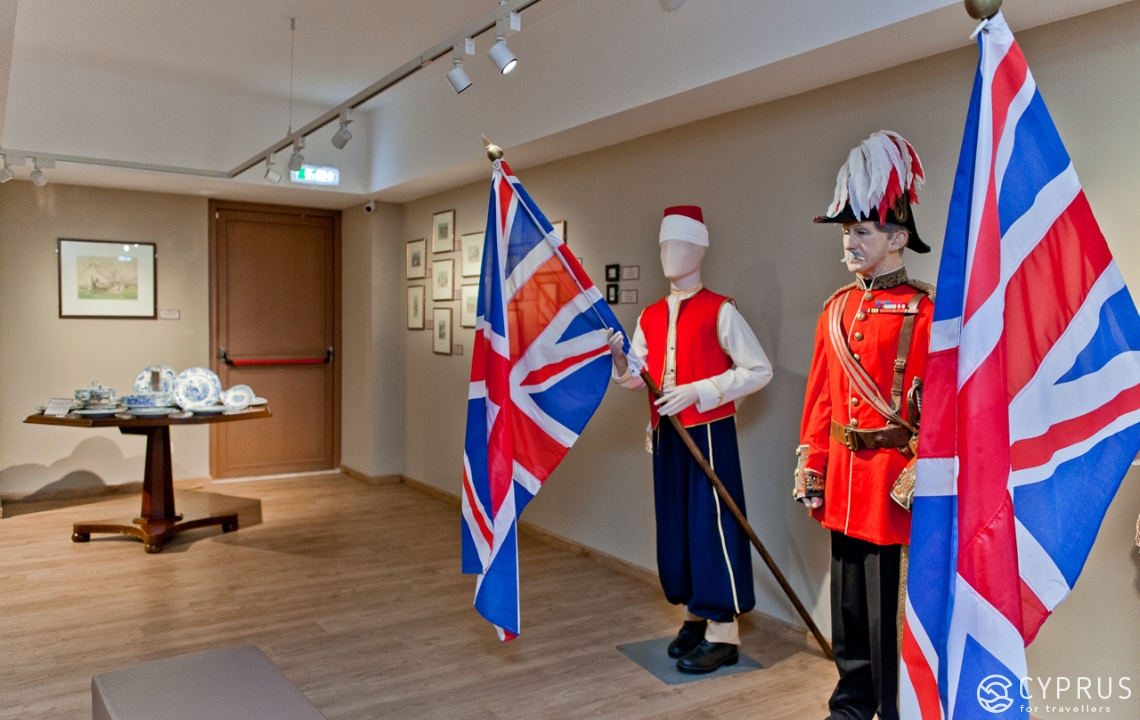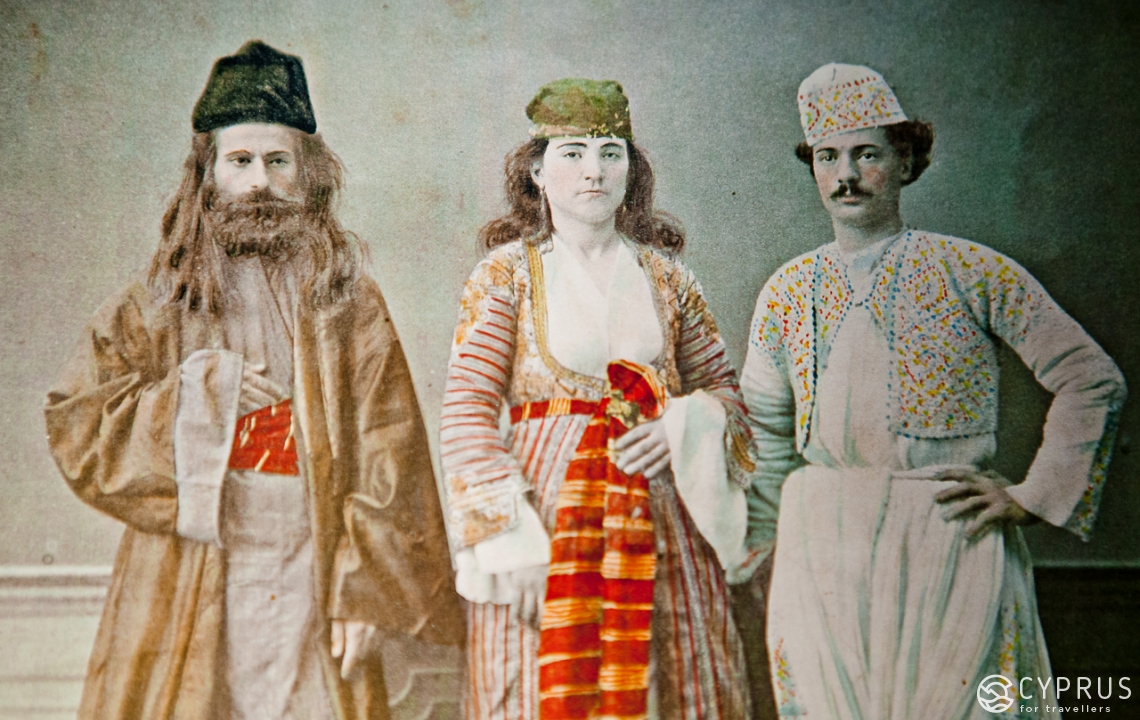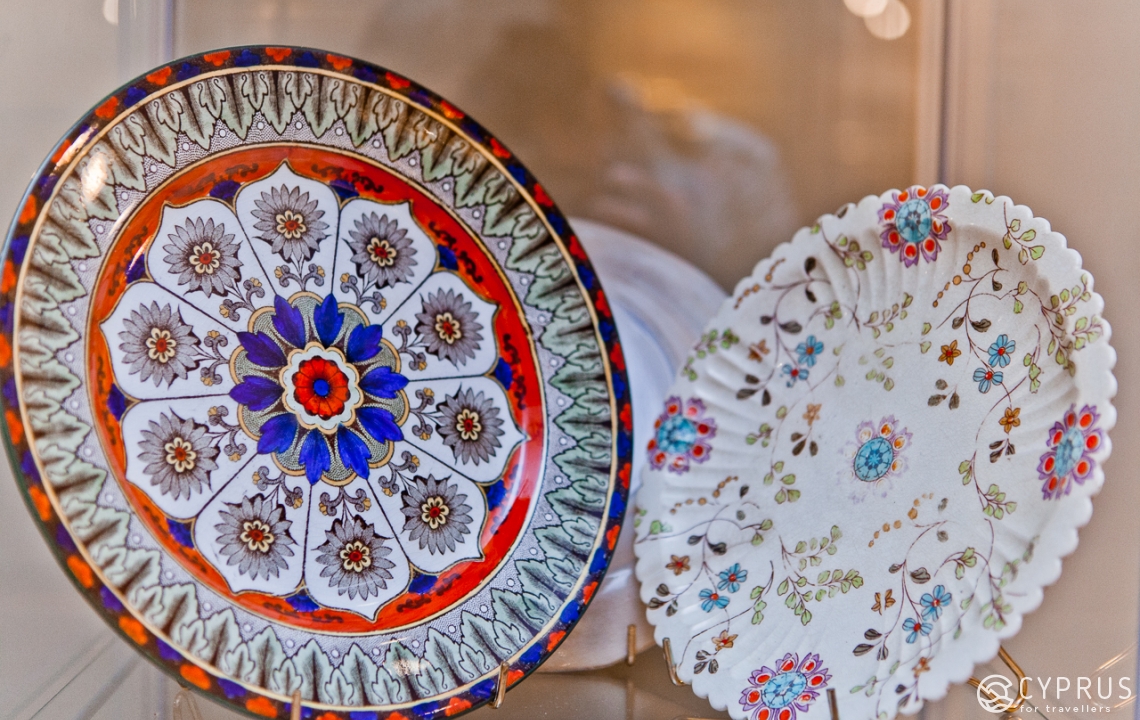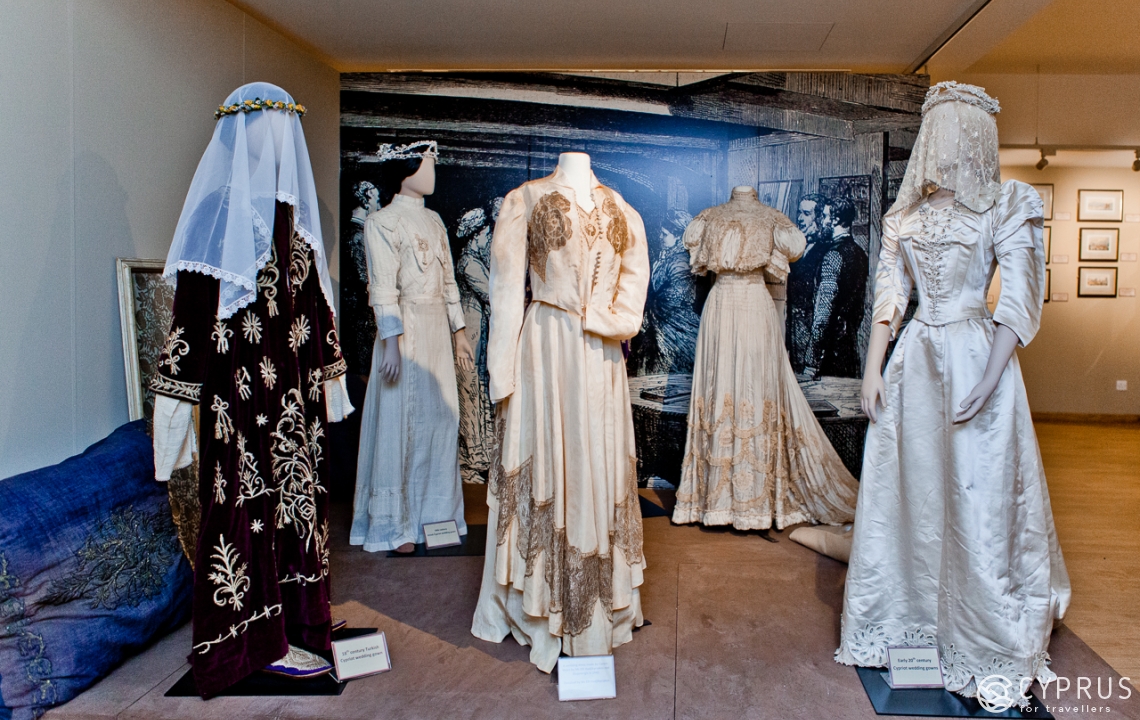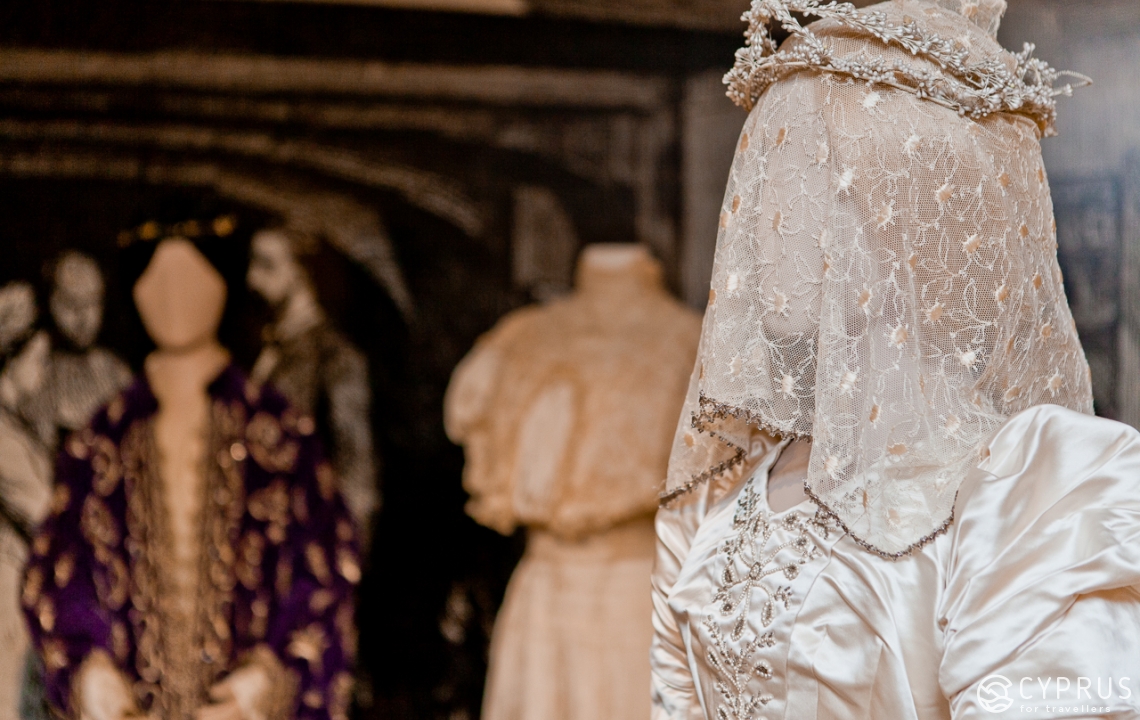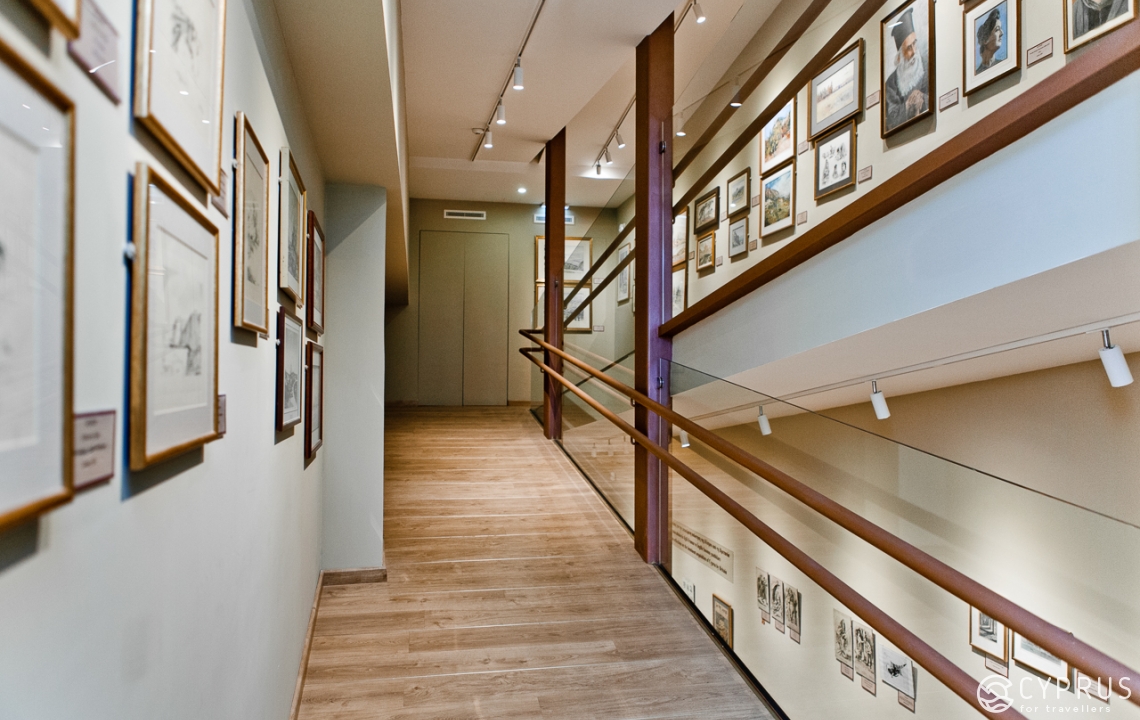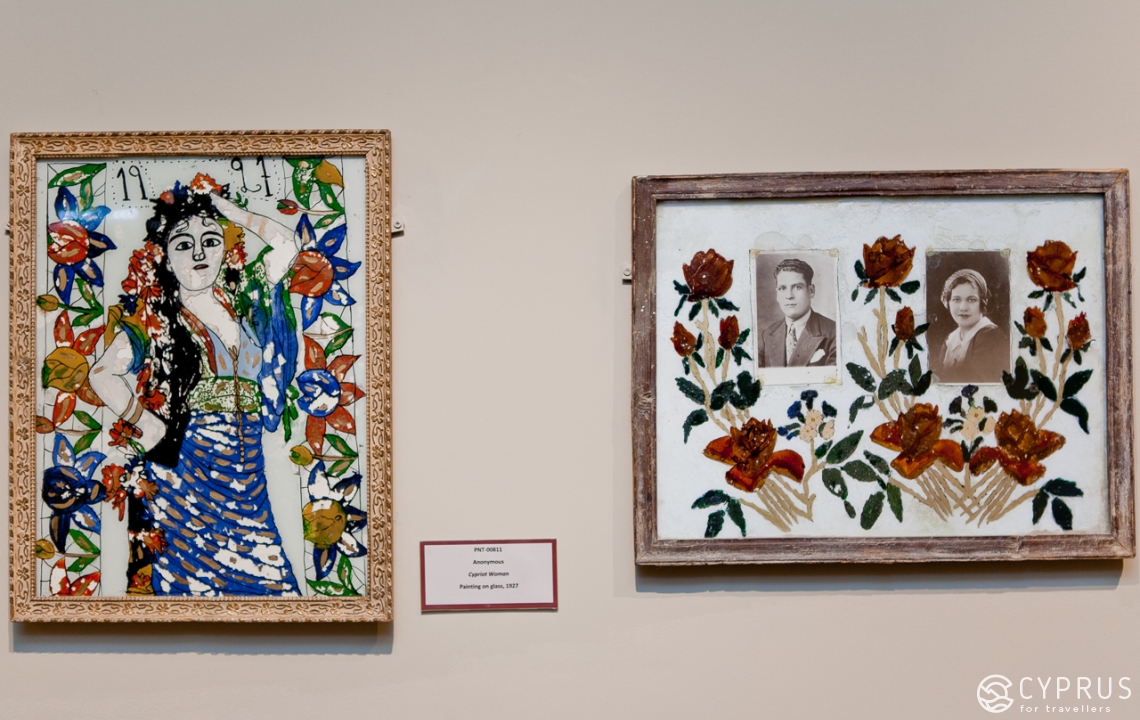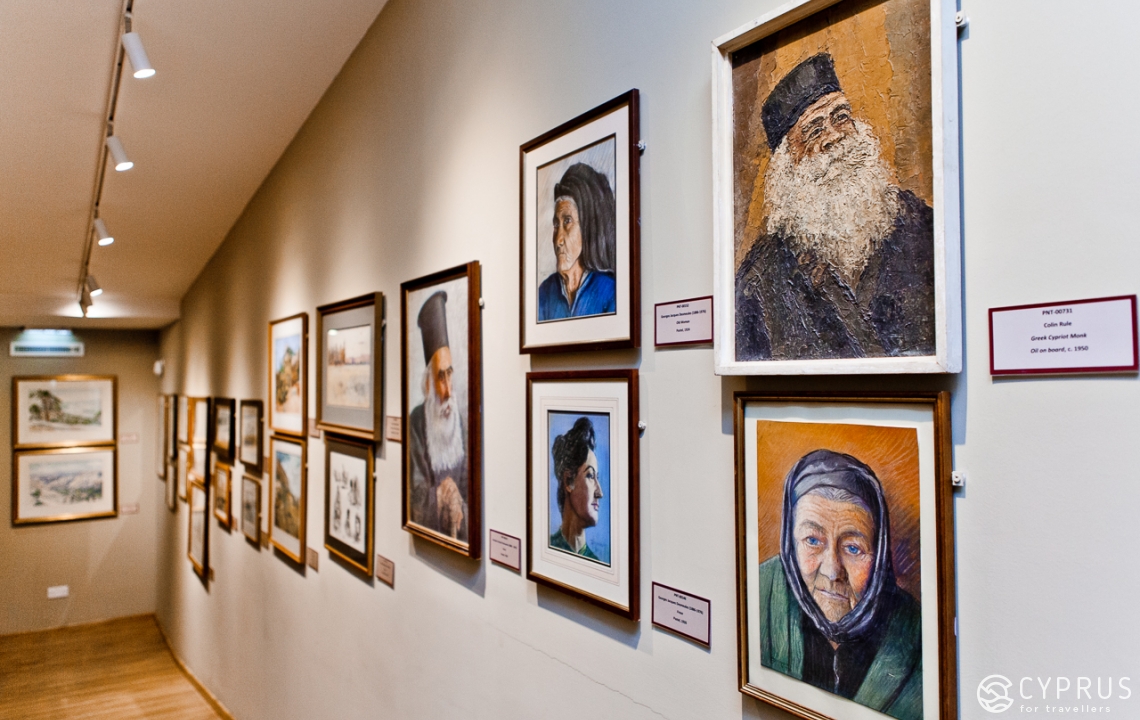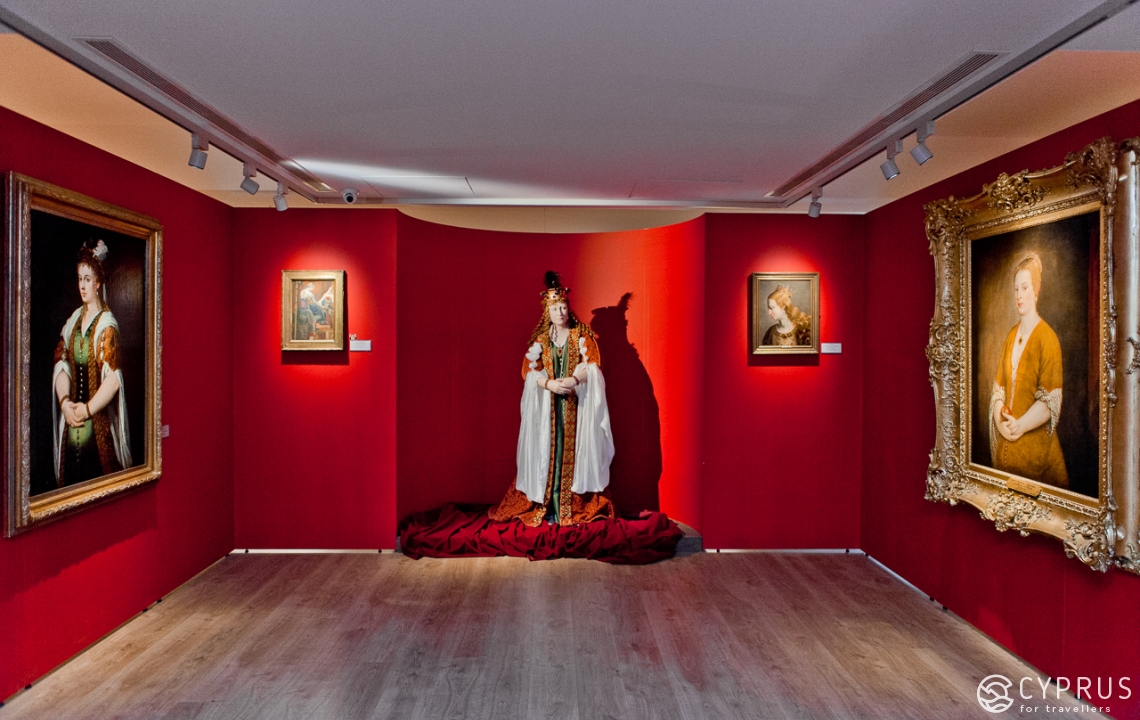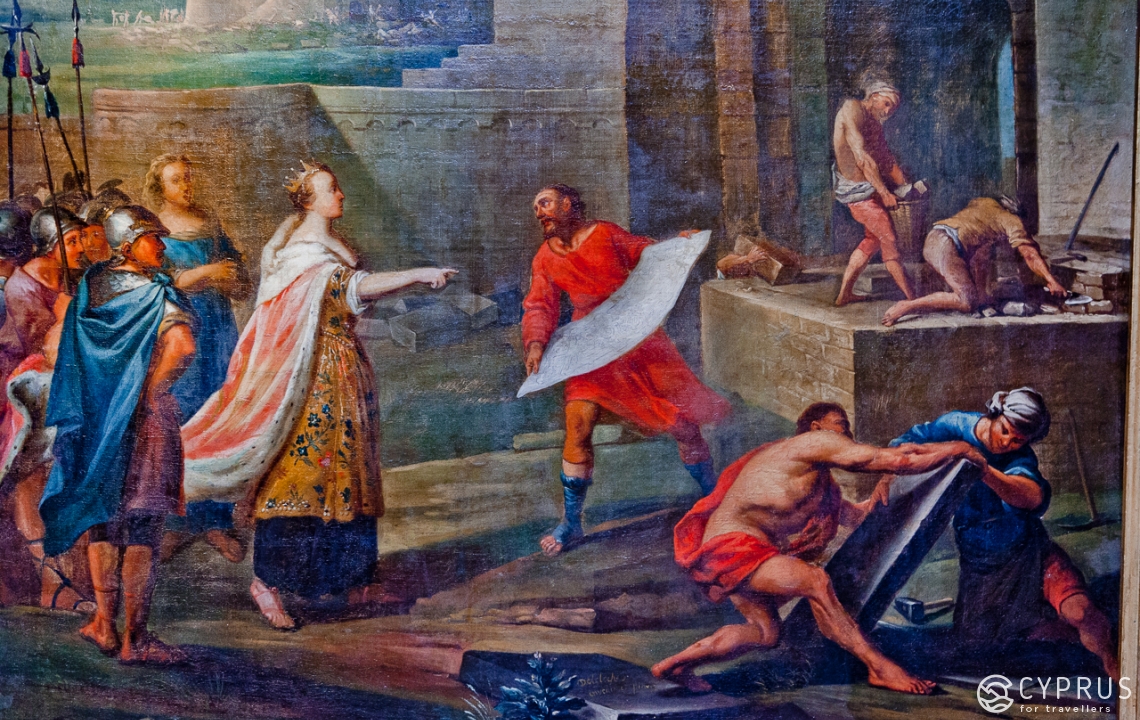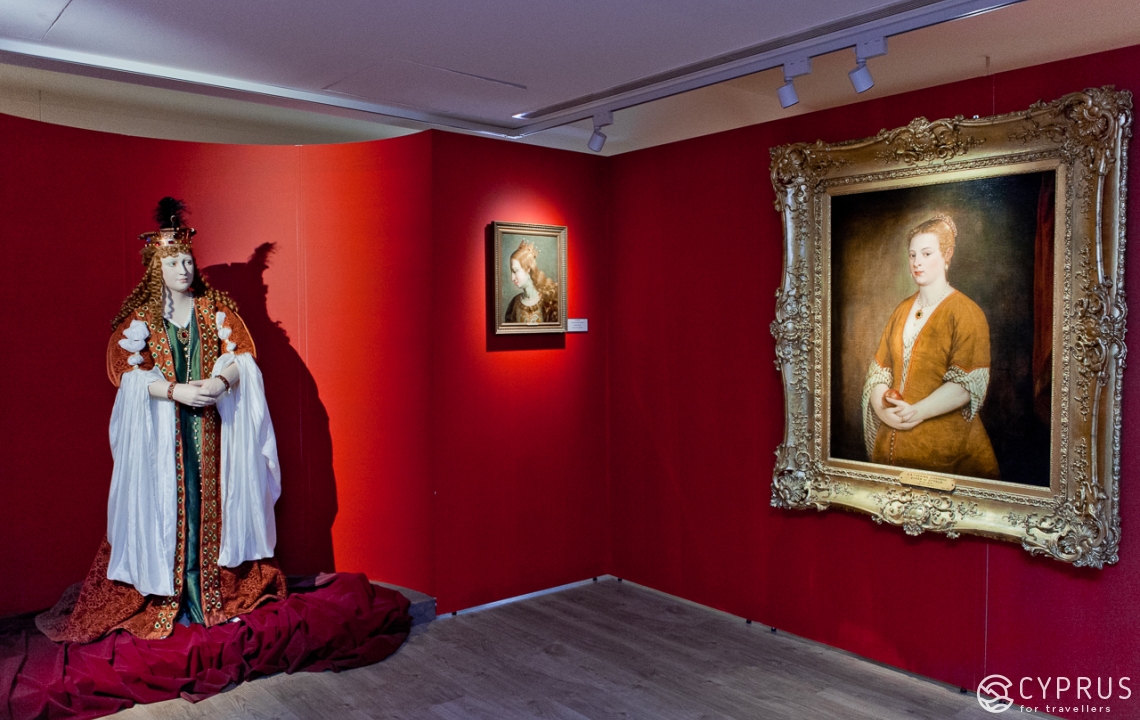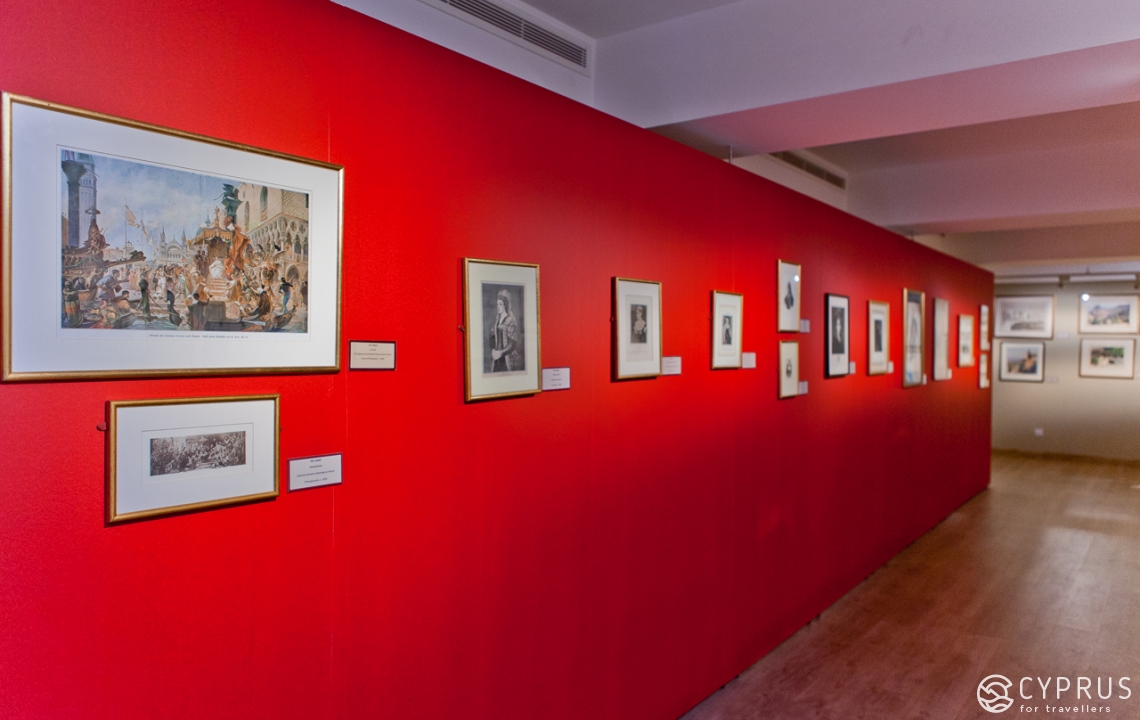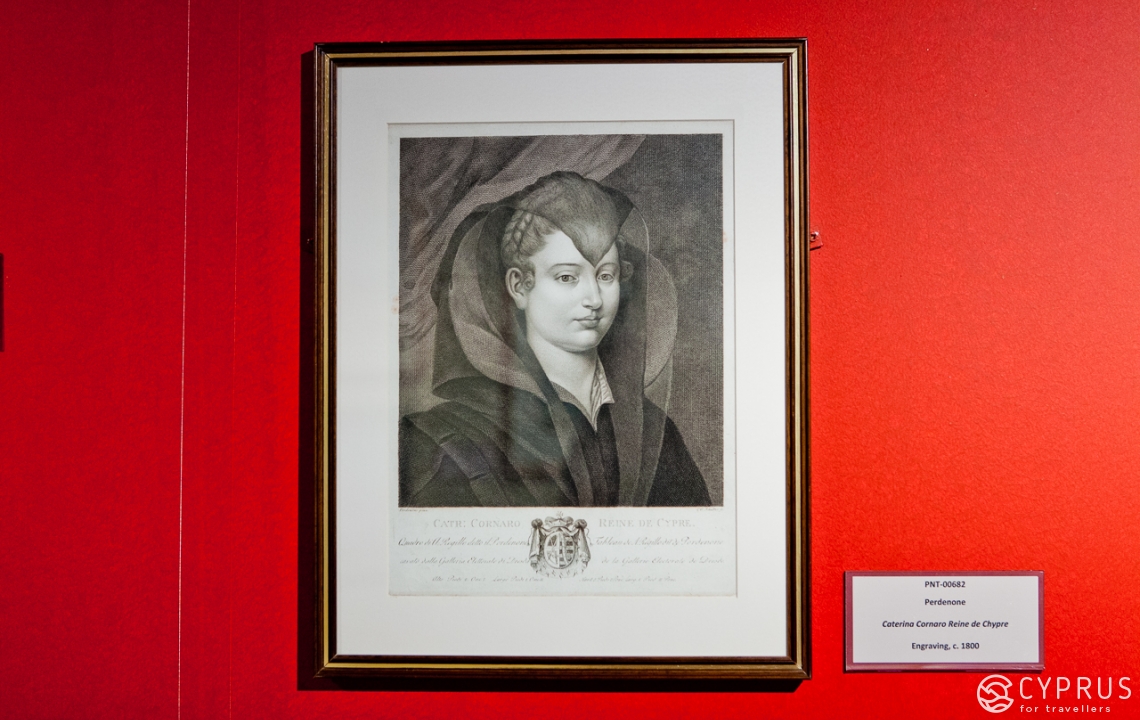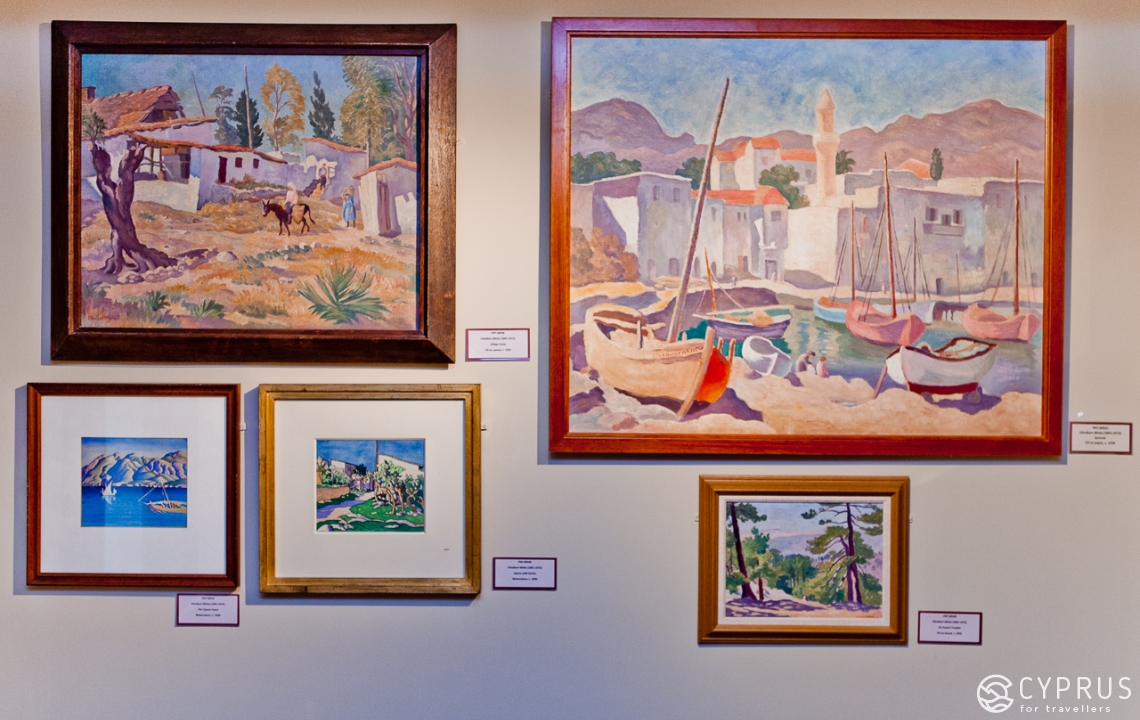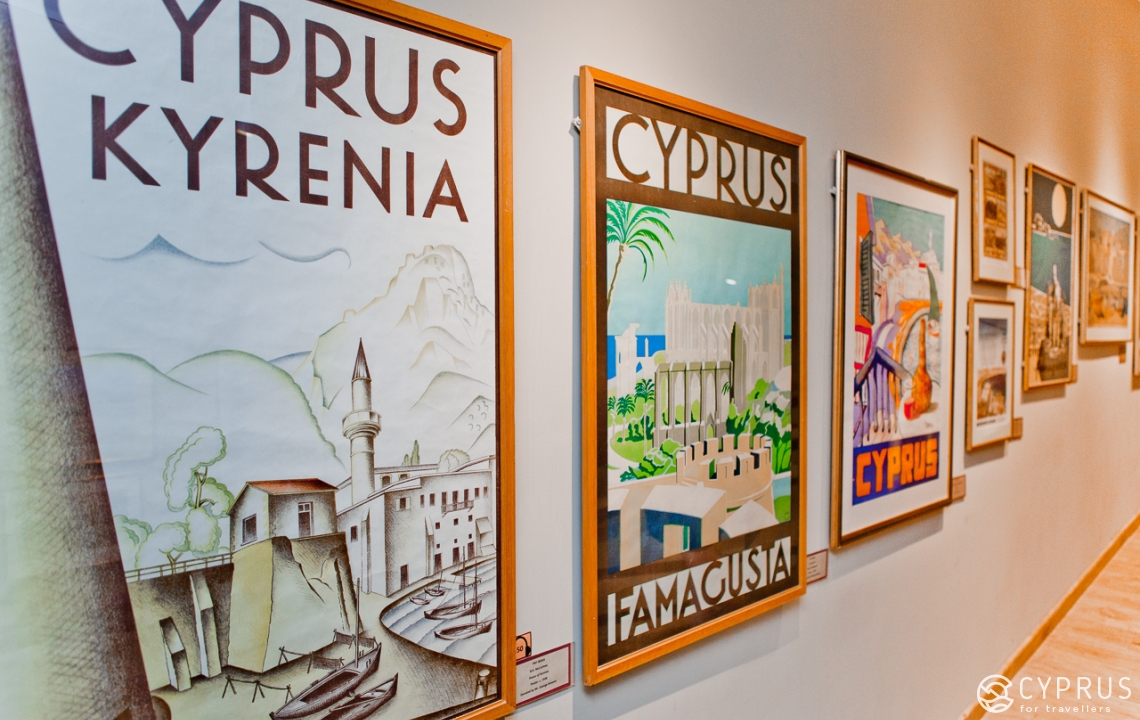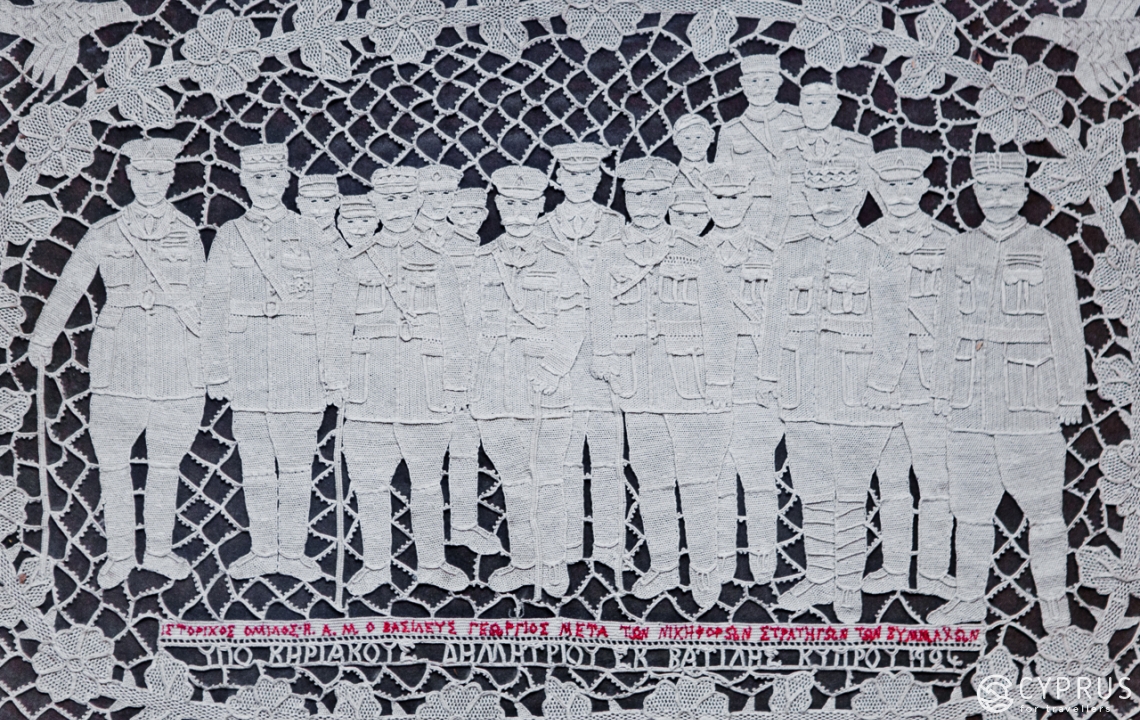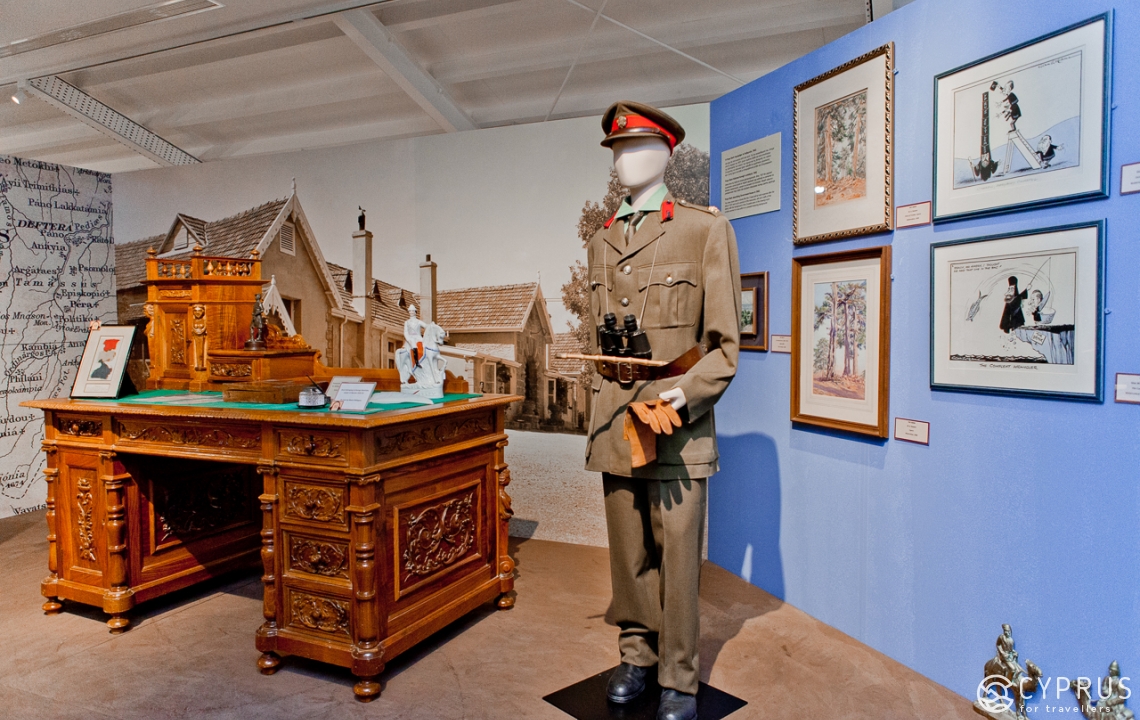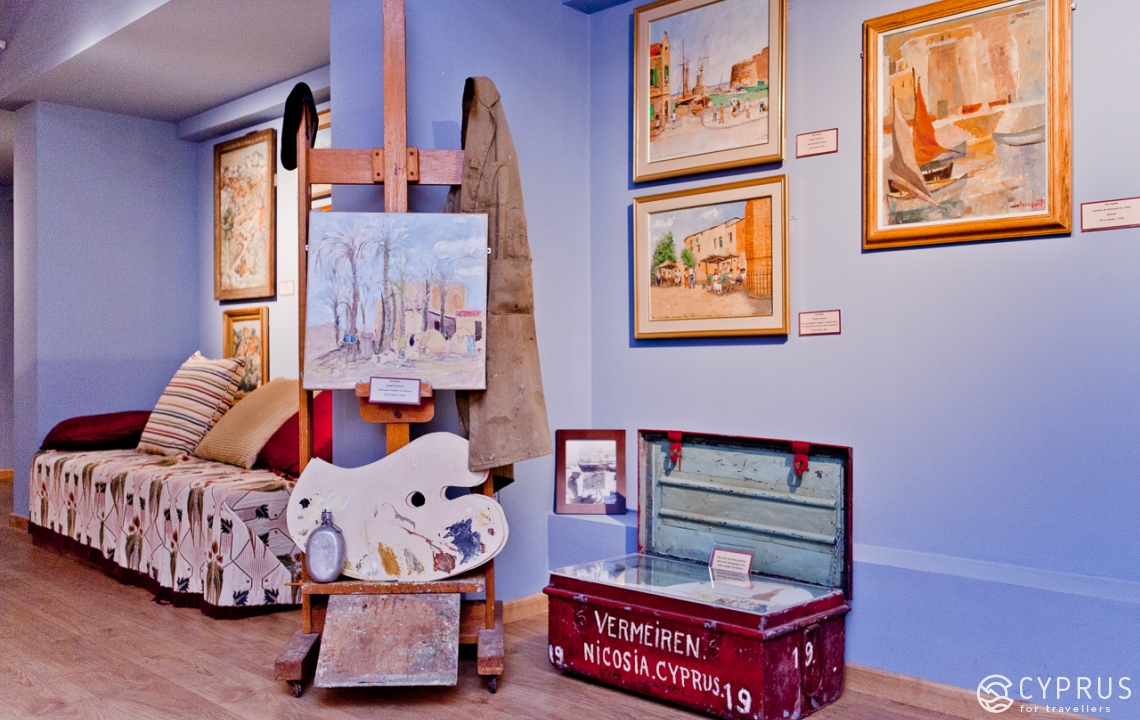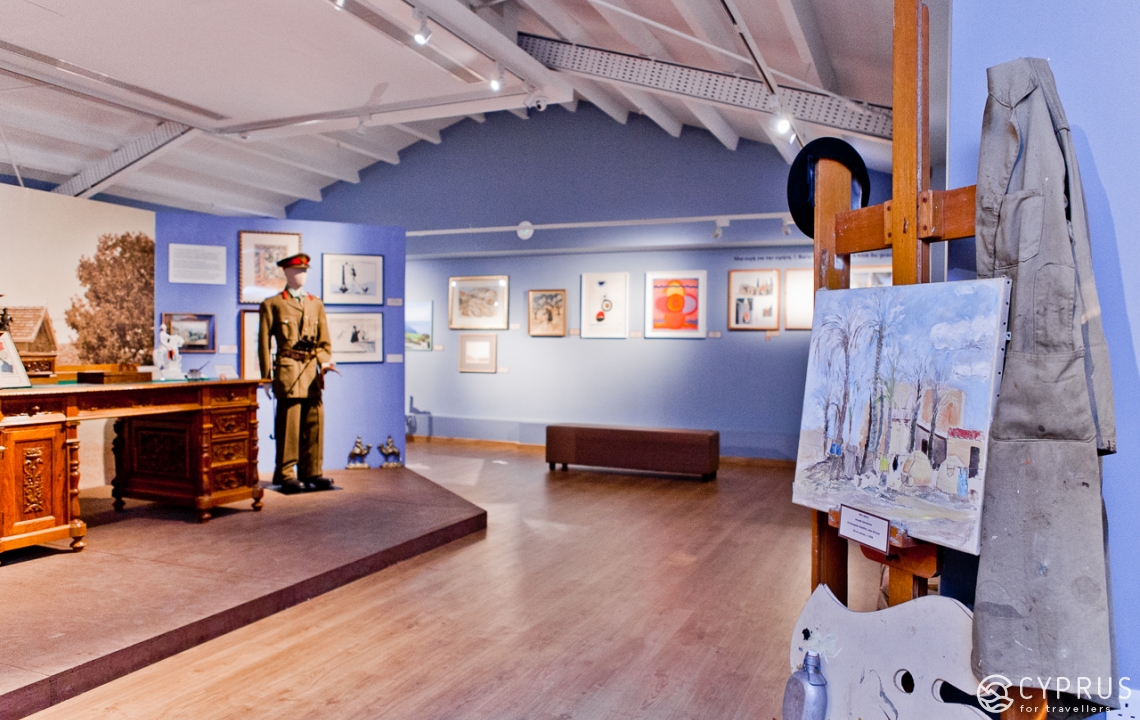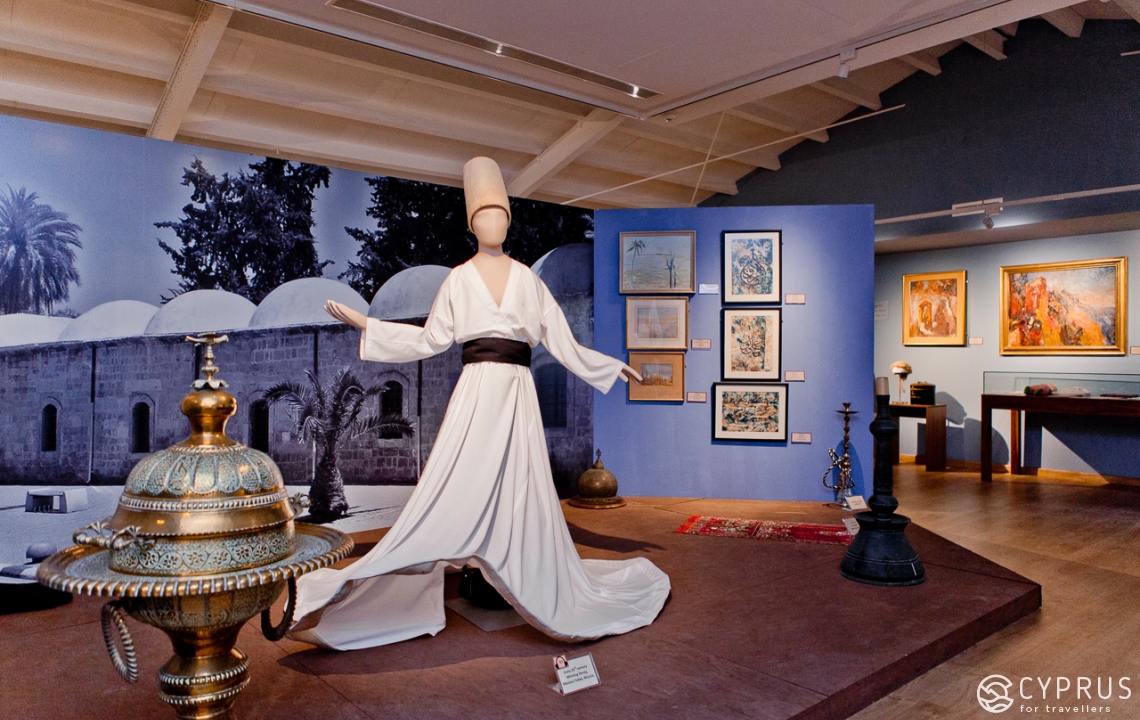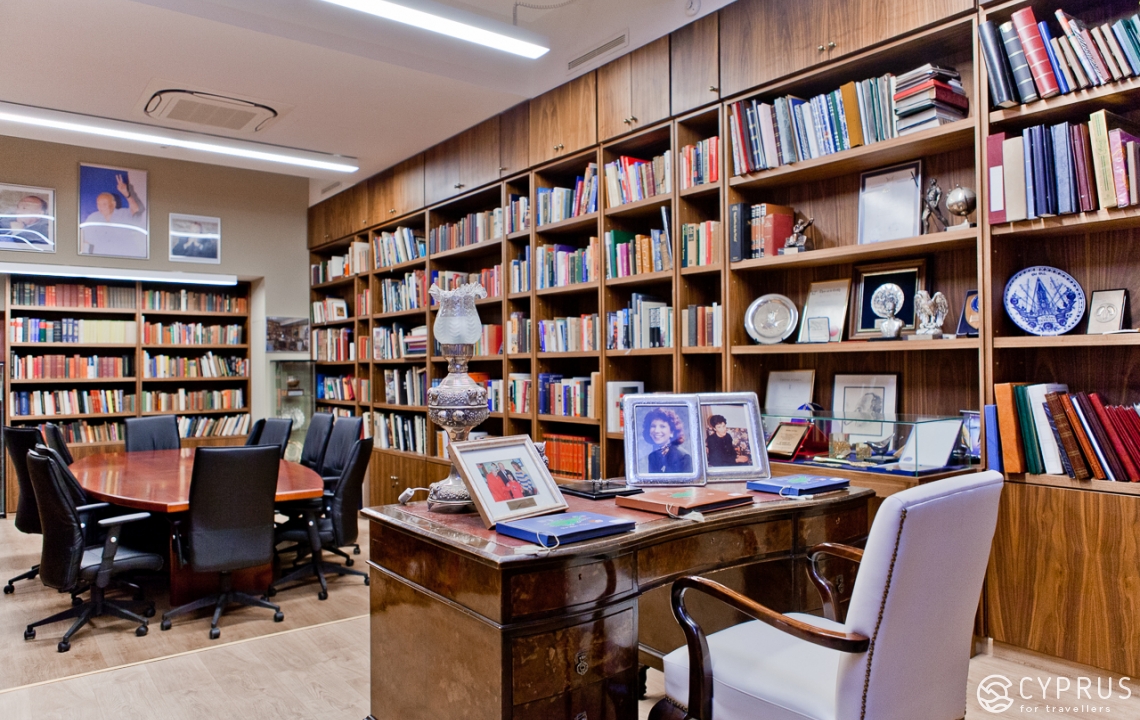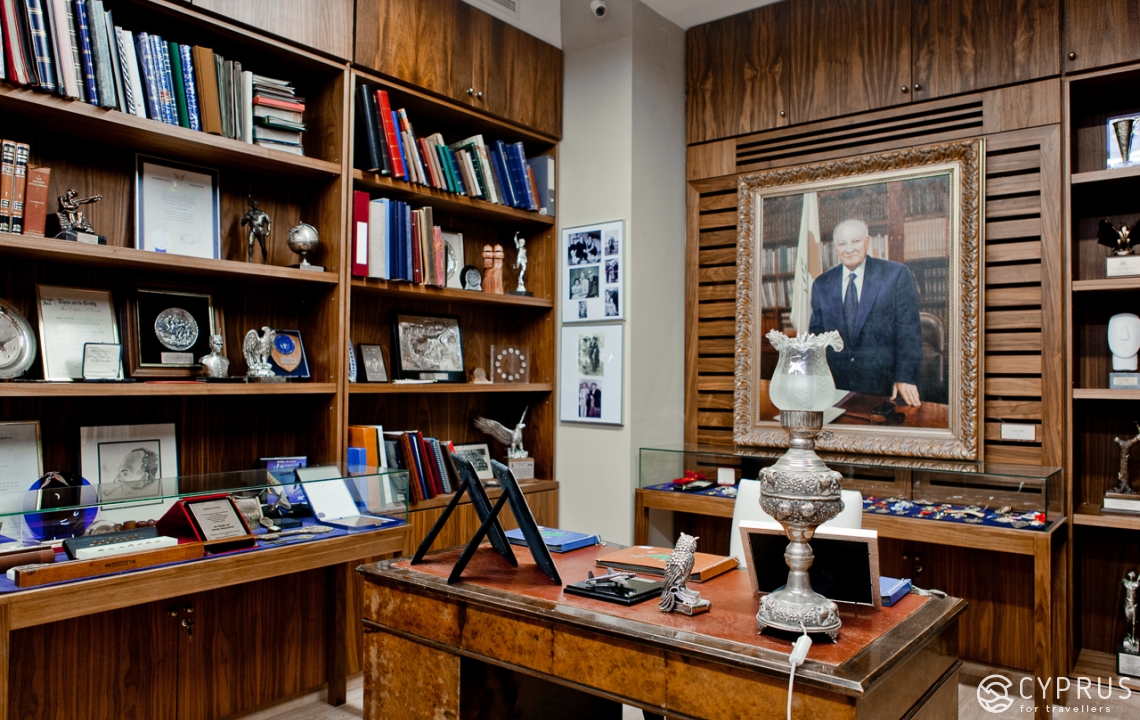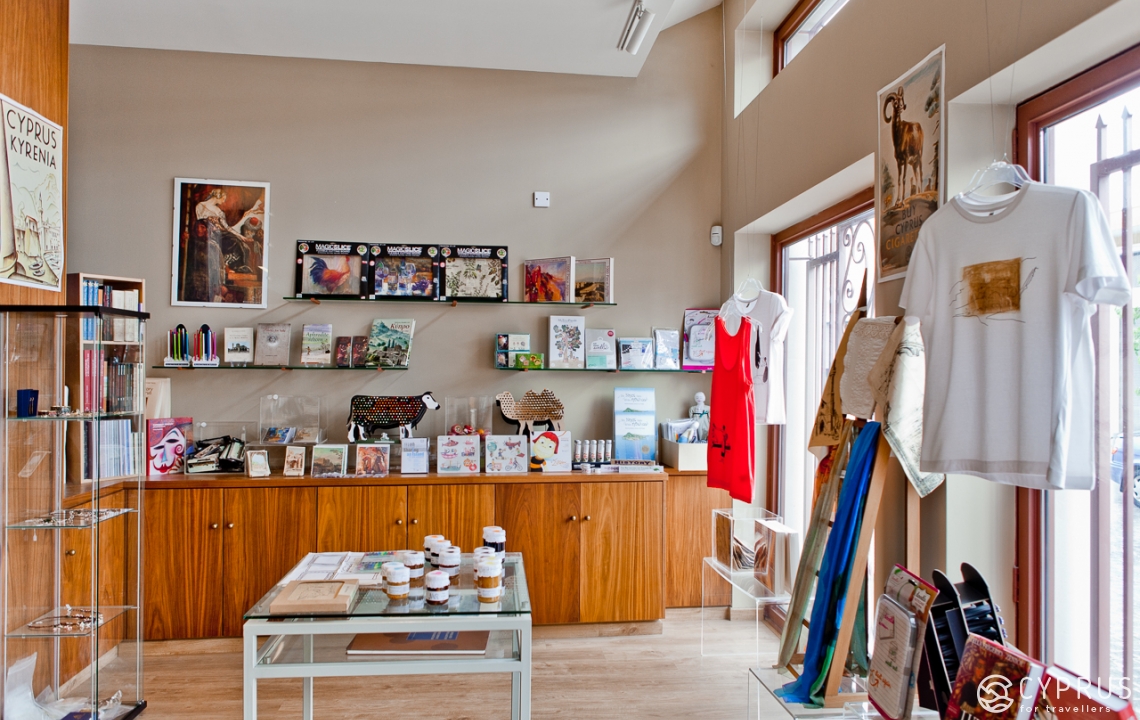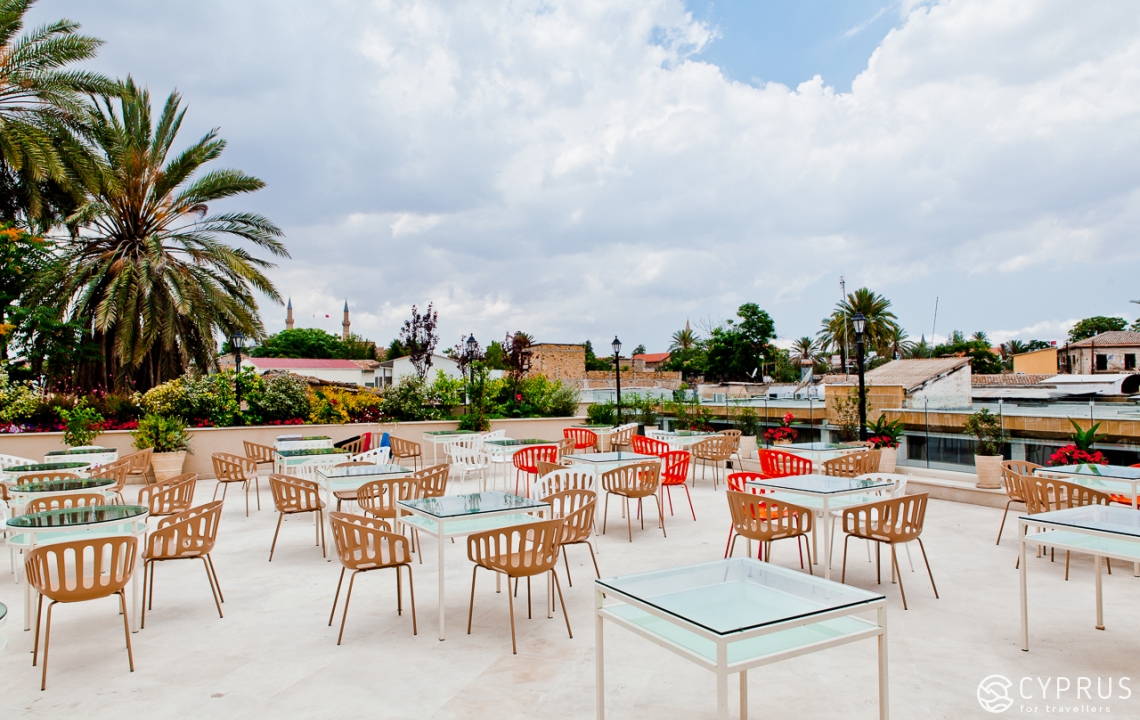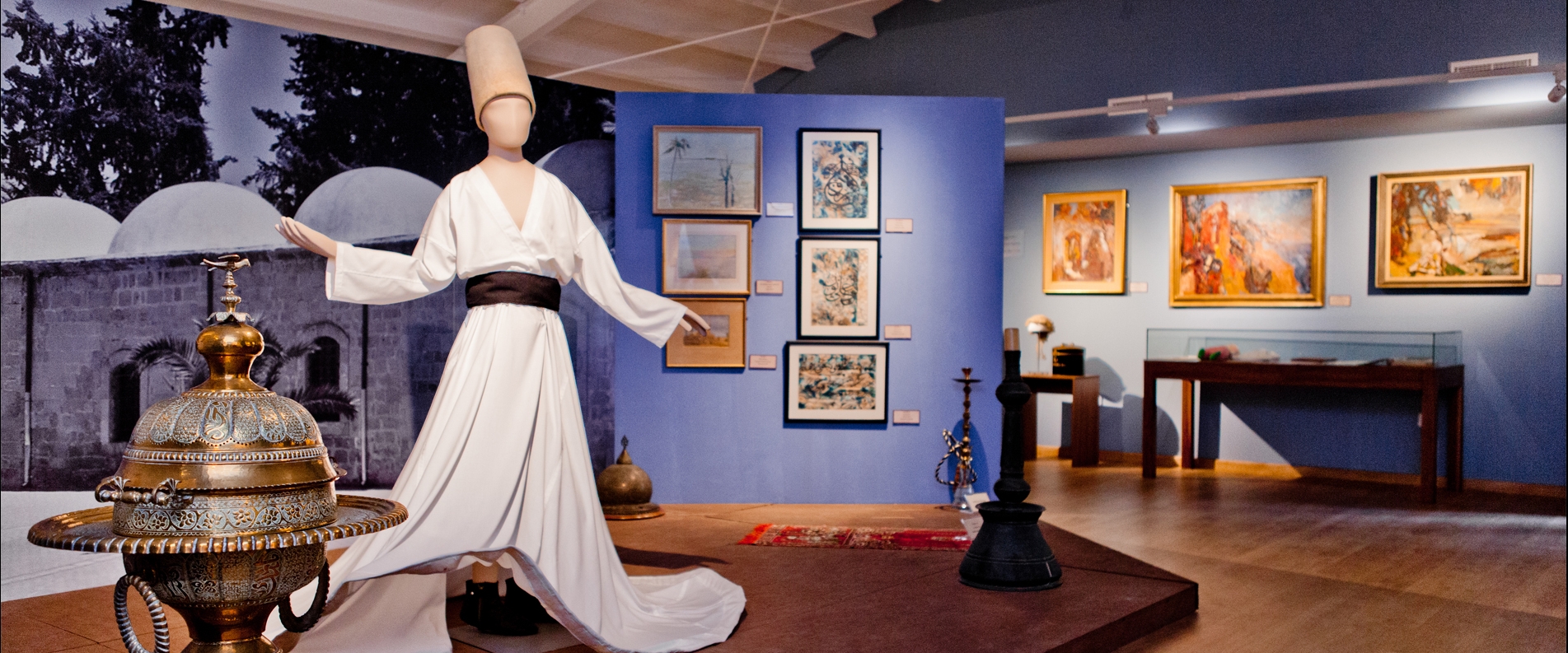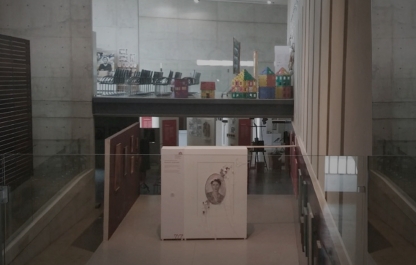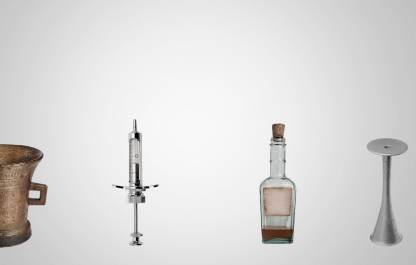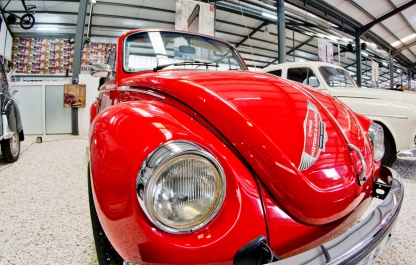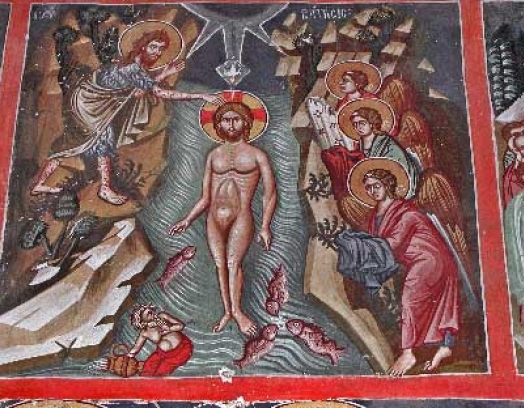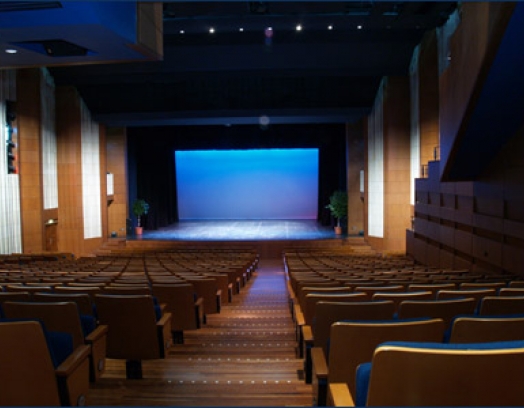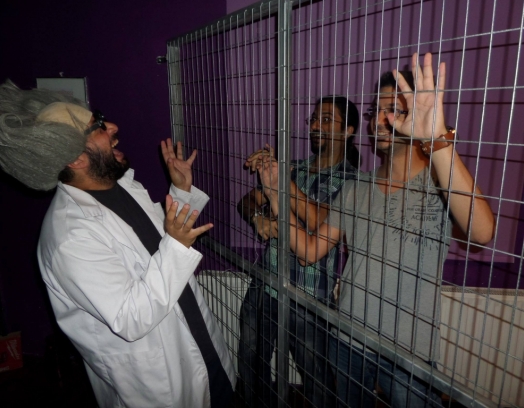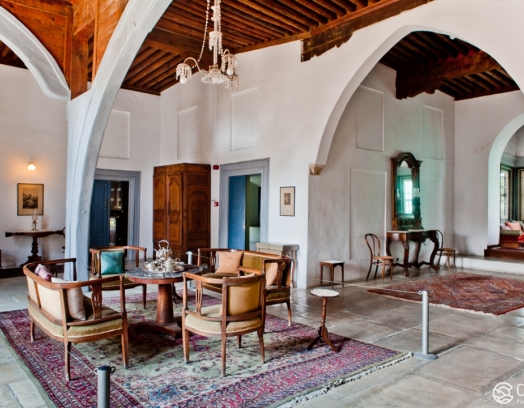Cyprus is a country with a rich history and culture. Its museums, galleries and private collections allow us to appreciate this heritage. One of the first places we visited was the Center of Visual Arts and Research (CVAR) and the museum of the Severis Foundation — all places known both in Cyprus and abroad. The museum was founded using the private collection of Rita and Costas Severis. We walked around its halls and talked to Rita Severis, the founder and director of the foundation.
The permanent exhibition, which includes paintings, antique costumesand objects connected with the history of Cyprus and its neighbors, was opened in 2014 and occupies several floors of the wheel-chair accessible building. The walls of the corridors display a retrospective of antique European paintings dedicated to Cyprus, a series of etchings and clippings of popular European newspapers and magazines dedicated to Cyprus. Further on is a series of photographs and rare posters about Cyprus — the first examples of advertisement promoting the island as a tourist destination.
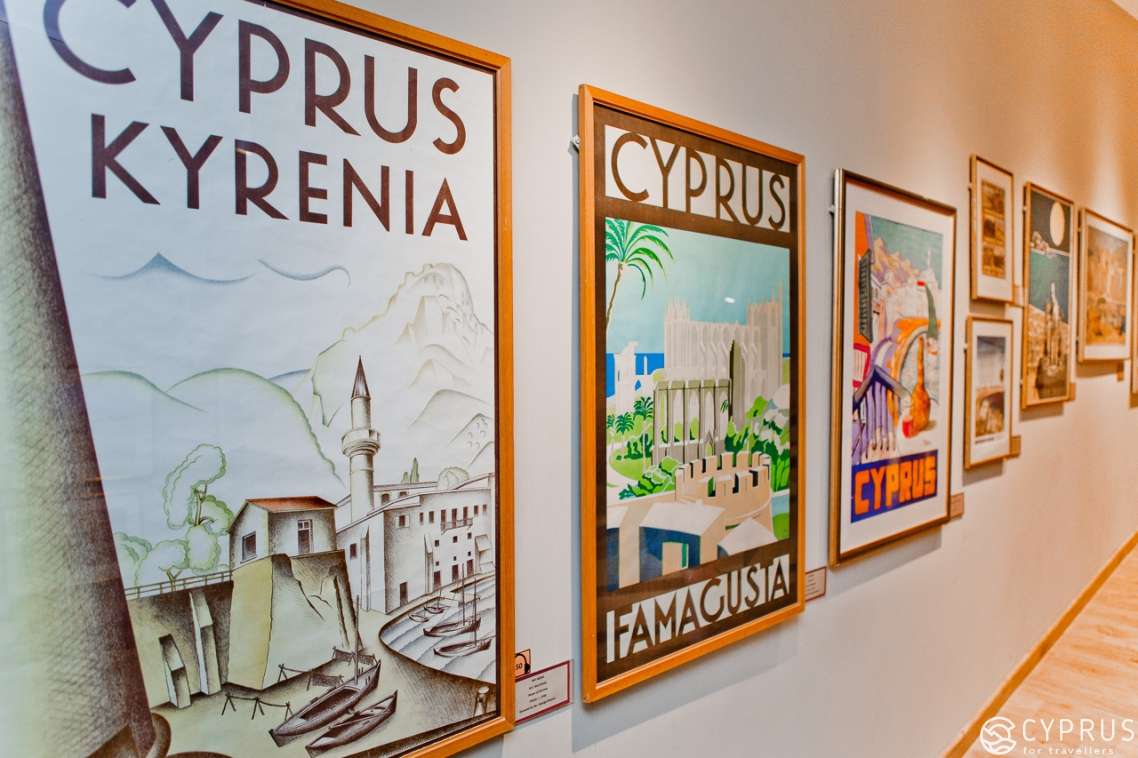
The exhibition is arranged in a chronological order. The first floor showcases views of the island from the 18th century — all works by European masters (most of whom are French). This part of the exhibition also includes examples of antique ceramics and costumes, which were subject to significant influence from Europe.
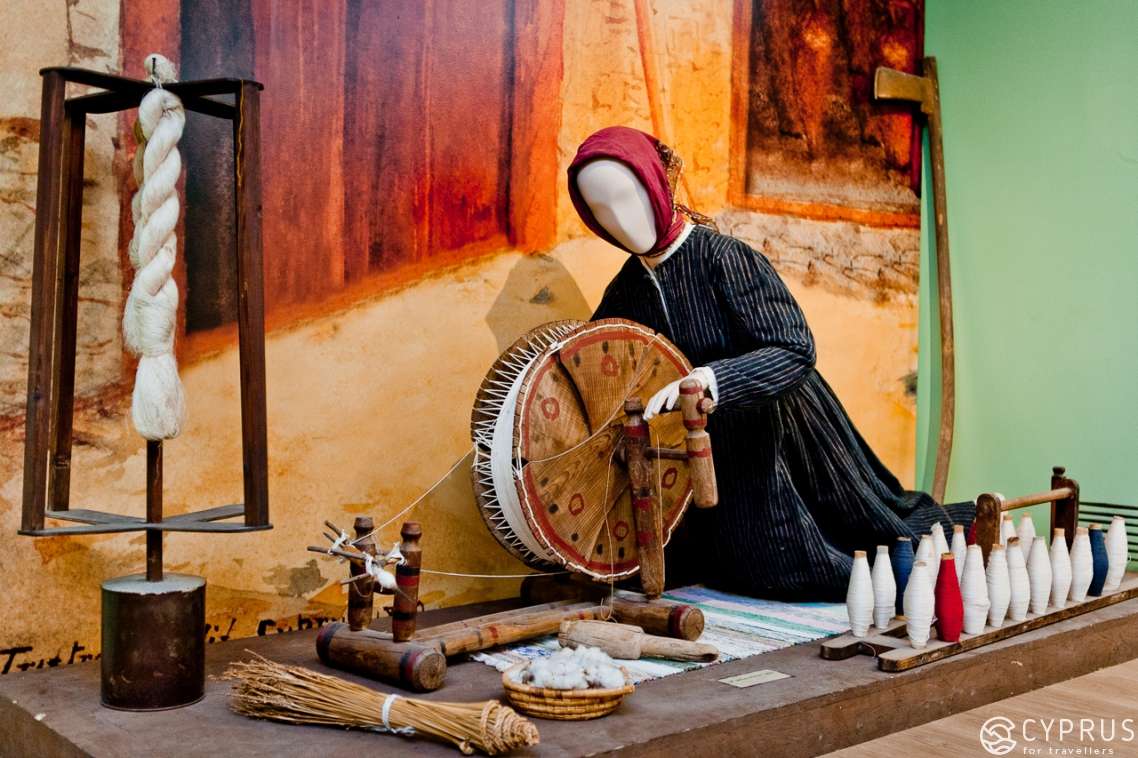
The center of the hall contains a few dressers, whose shelves, if opened, reveal different clothing worn during that time period. Take your time and study their style and decorative elements.
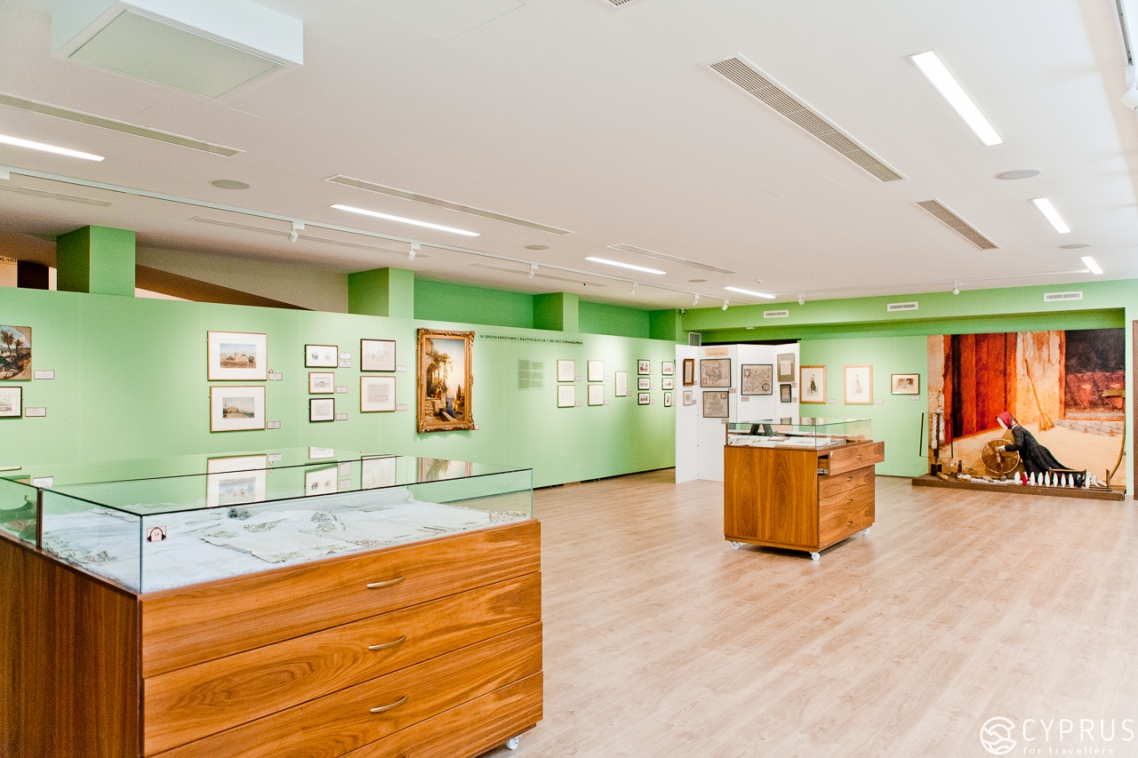
The second hall showcases 19th century works, including art from the British colonial period (starting in 1878). You will be «greeted» by the first British consul in Cyprus. A group of mannequins dressed in clothing of that time period will surely catch your attention — there is an obvious difference between Turkish and Greek-Cypriot wedding attire. The amount of detail and hand-made work is really quite impressive.
Despite the different fashion trends, there has always been a strong sense of national traditions. So, for example, one can notice that European-style clothes were worn together with Middle-eastern head garments and traditional jewelry (circa 19th century).
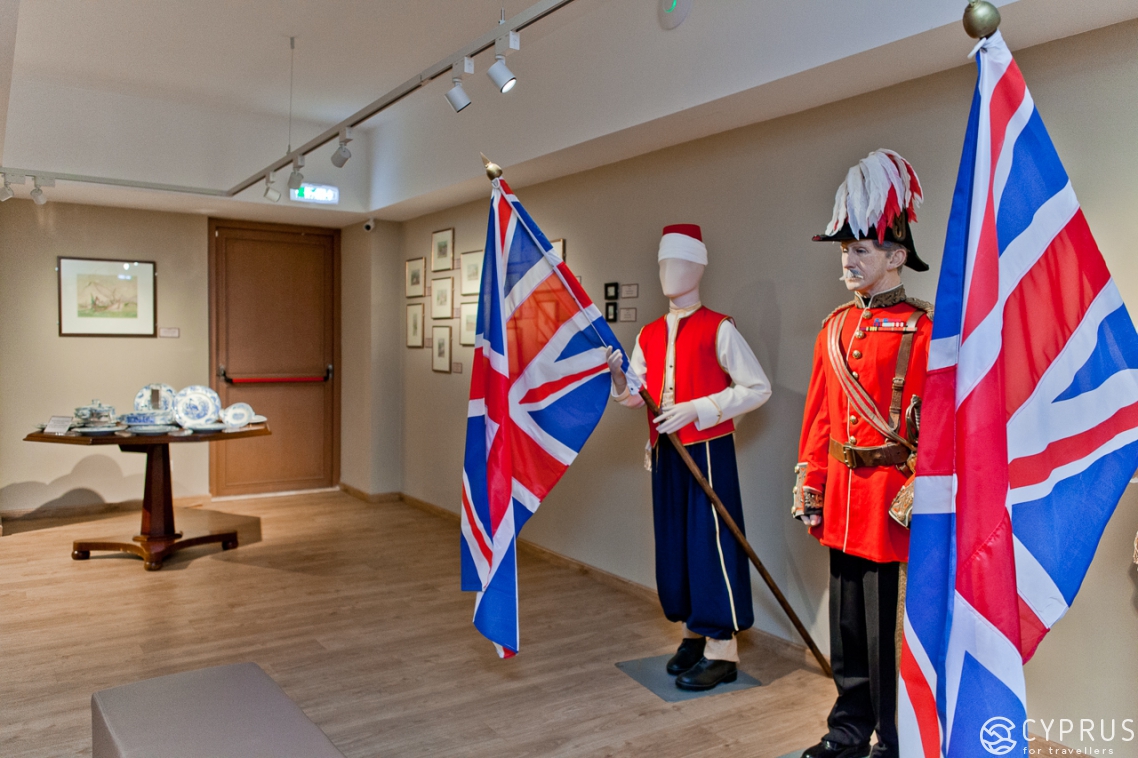
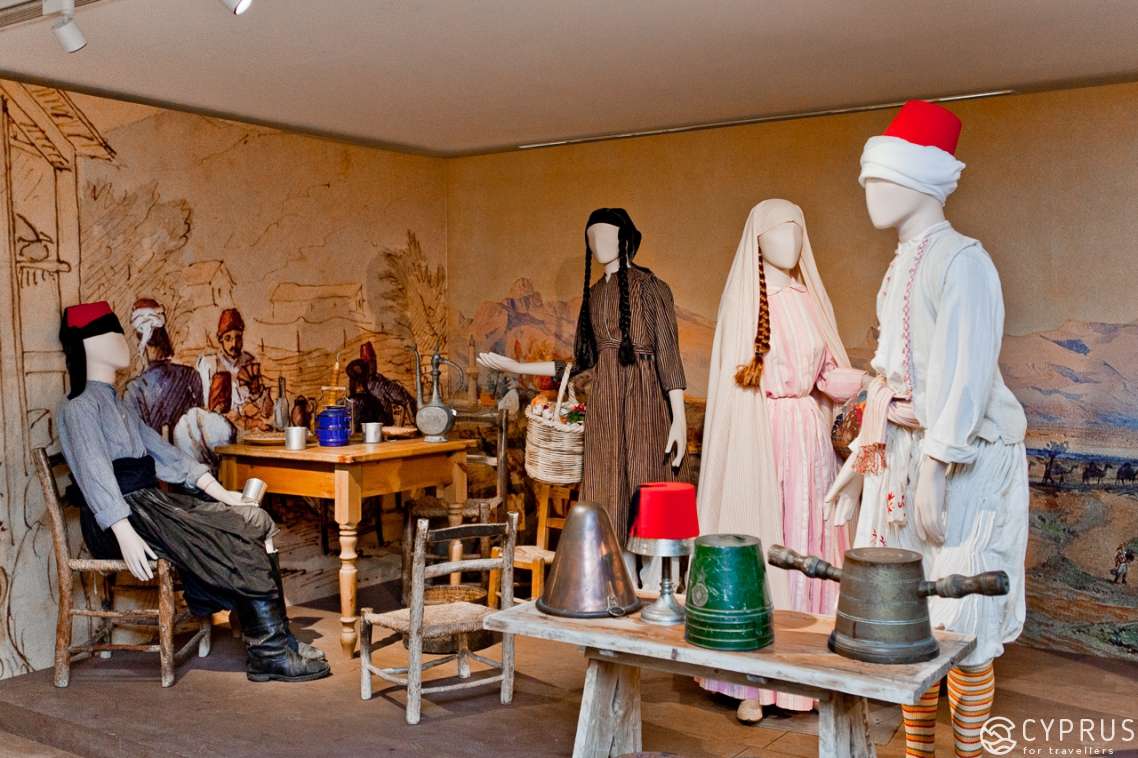
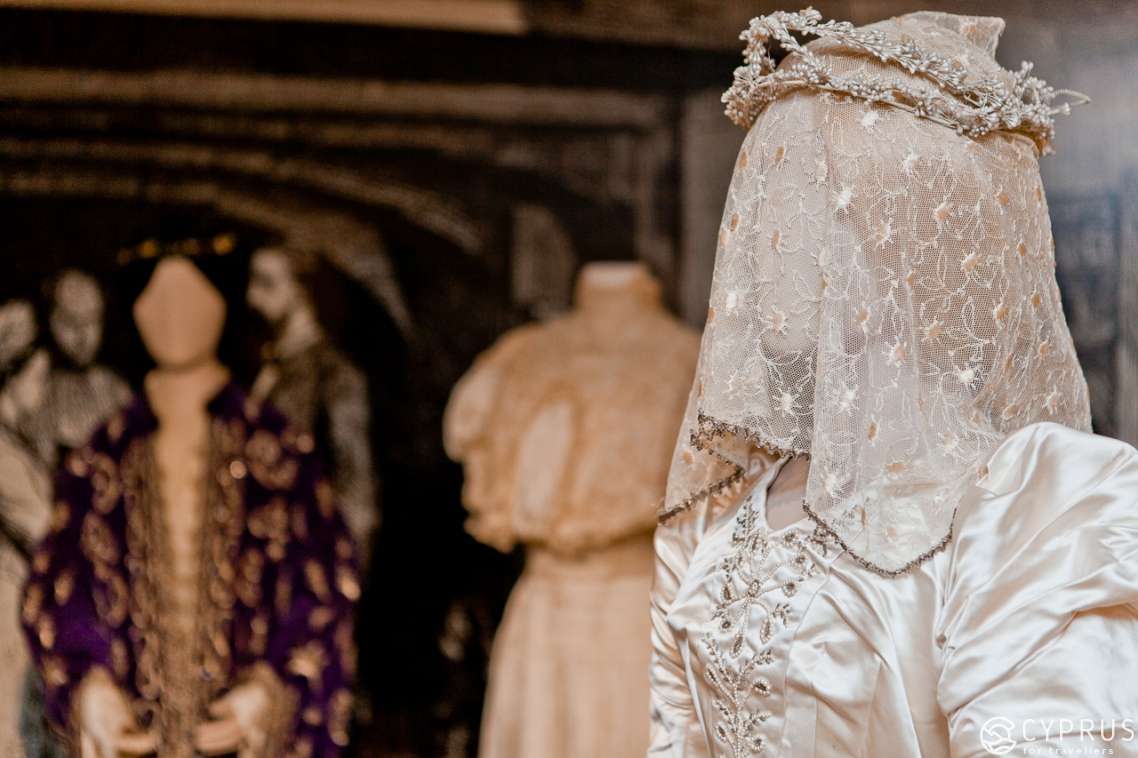
We keep going up and come across the «red room», dedicated to a subject beloved by Queen Catherine Cornaro (1454-1510), namely, grand portraits and genre paintings (16th-19th century).
Take a look at one of the portraits of the queen — it is an allusion to the story of the Judgement of Paris, where Catherine is featured as Aphrodite — the victorious goddess, who claimed the apple as a prize of beauty.
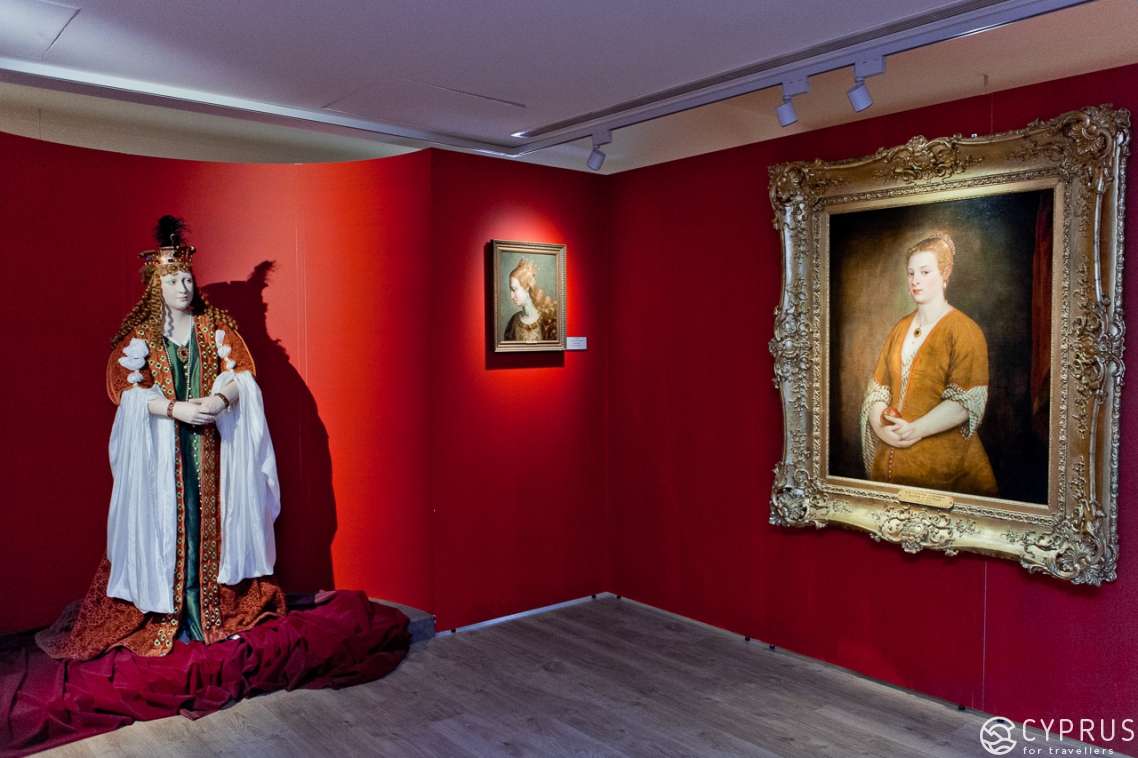
The walls of the exhibition space feature views of Kyrenia — a region in the north of the island, which in the 19th century became a famous «artist colony».
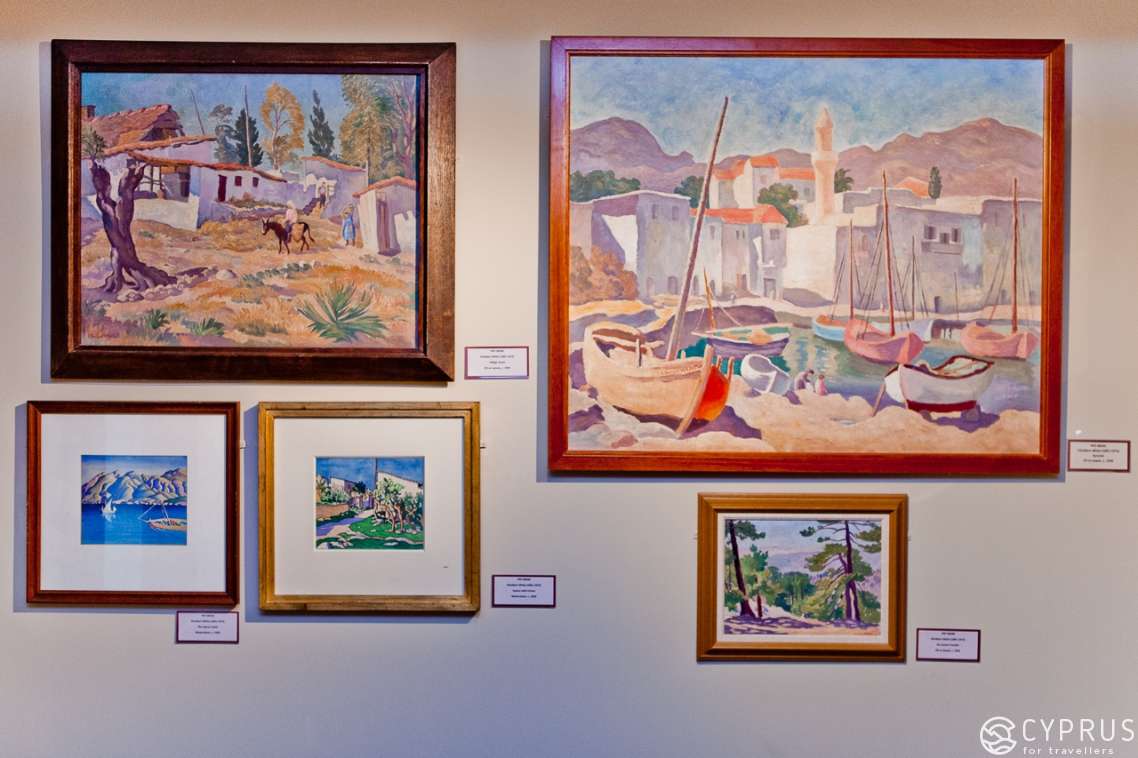
The key themes of the upper floors of the museum are the British period and the country’s struggle for independence. Part of the exhibition is dedicated to the more tragic events of the latter days of the British rule. This part includes elements of decorative art, paintings and mannequins representing the island residents: Greek and Turkish Cypriots, Armenians, Maronites and the British. Also worth viewing are the paintings and drawings made by Cypriots and foreigners living on the island.
The center of the exhibition is the desk and chair that used to belong to that period’s mayor of Nicosia. It is an example of traditional woodcarving technology and style. The walls are lined with artwork from the private collection of GlafkosClerides — former president of Cyprus. These are works by British, Greek and Cypriot artists. The horizontal window cases display household items, accessories and photo albums.
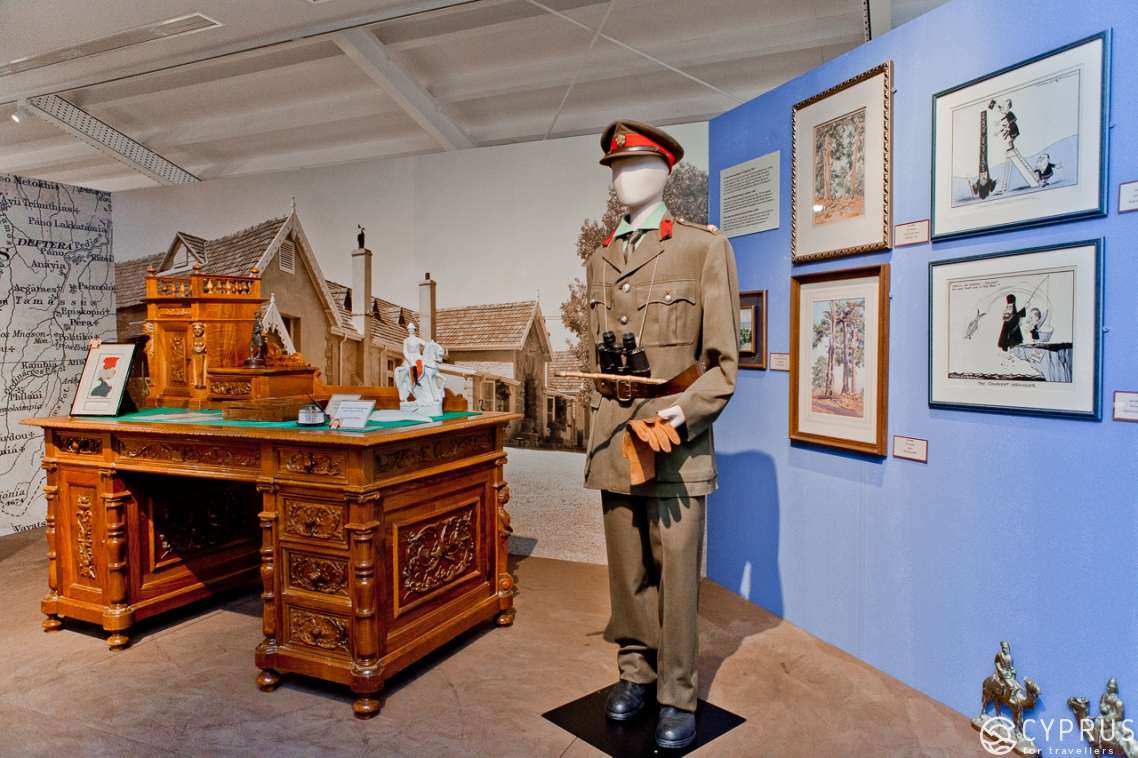
We keep going and come across a figure of a dervish. A community of dervishes lived in Cyprus at the beginning of the 1920s, but later moved to Syria.
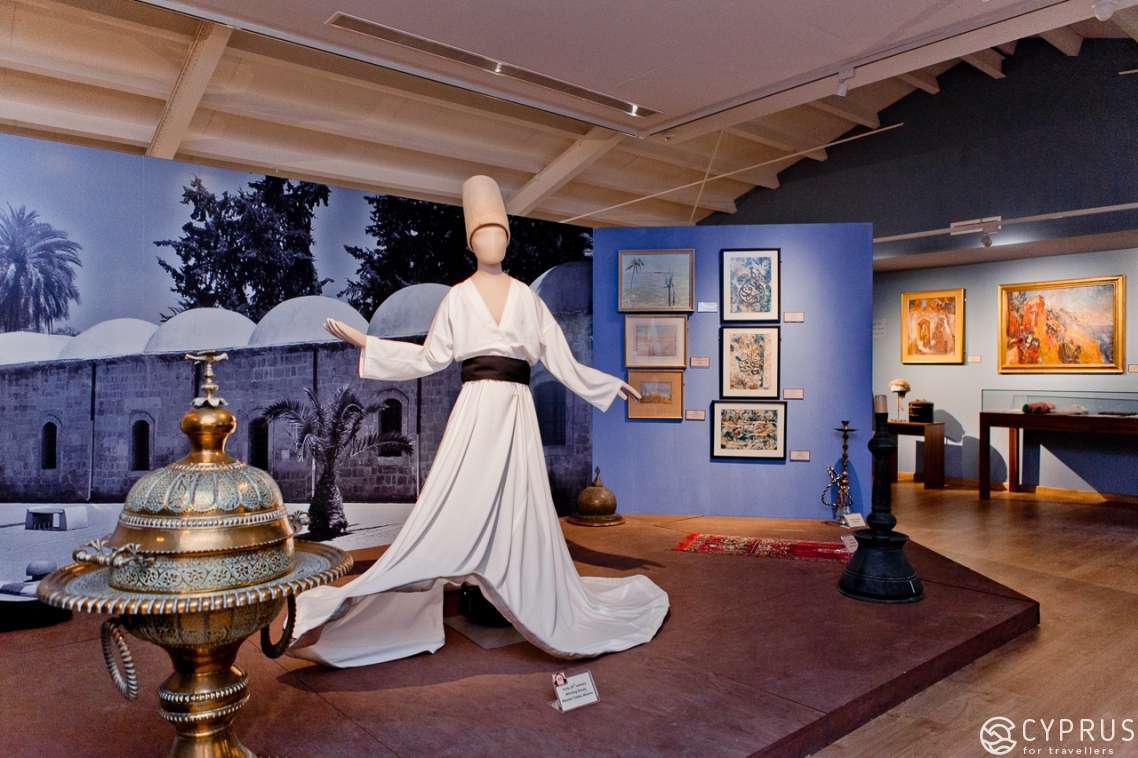
A significant part of the exhibition is dedicated to the Jews who fled for Palestine, who stayed in refugee camps in Cyprus in the period of 1946-1949. Items related to this time period include photographs, letters and children’s toys.
Please note that the upper floor houses a research library that used to belong to GlafkosClerides. The interior design of the reading hall reflects the original style of Clerides’ study. The shelves feature a large collection of books, which visitors are welcome to pick up and read.
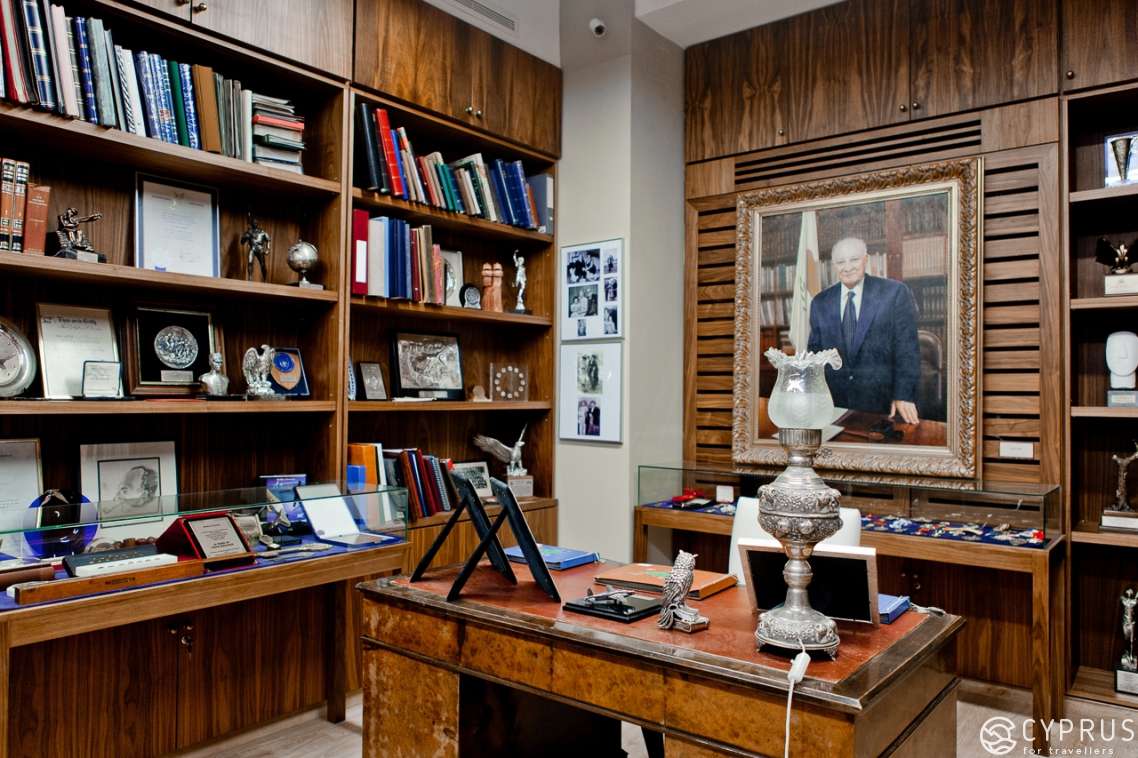
After visiting the halls of the museum, we got to meet its director Rita Severis.
«Our museum is the first of its kind. It is dedicated to both communities — Greek and Turkish Cypriots, as well as a few other communities. We are currently considering bringing other communities and diasporas on board. The Armenian diaspora has already expressed an interest in our work. The Maronites have also shown a willingness to collaborate.
I can still remember the first items showcased in our museum. We conceived of an idea for a full-blown exhibition after we decided to decorate our house using authentic Cypriot artifacts. We began to receive items from abroad. I should say that only about 0.5% of what we have was bought in Cyprus.
In 1983 my husband and I (Costas Severis) started to piece together our collection. One day we realized that we had so much stuff that we were running out of space. Then we started getting visitors from abroad, who came to see our collection. This is when we realized that we needed to open a museum. This was before we received any gifts and contributions.
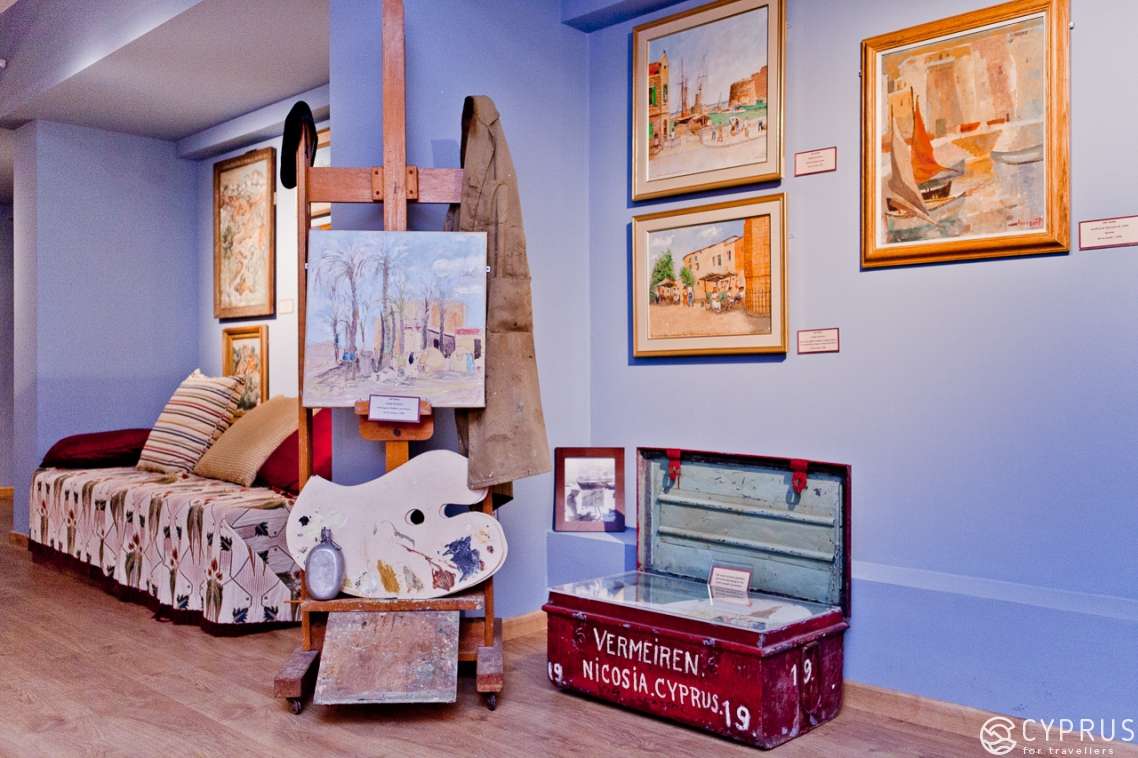
The leitmotif of our collection is dedicated to the foreigners who have visited Cyprus. We would like to further explore the subject of Russians who have lived on the island. For example, I recently found out that Leon Bakst had once visited Cyprus. He was so inspired by Cypriot sculpture that he incorporated its elements into his later work, such as stage costumes and decorations. I have purchased some of his works for the museum.
In 2000 we developed the main concept for our museum, which was relied on using different objects to tell the story of our island. In 2013 we began the construction process. But as you know, 2013 was the year of the financial crisis. We were hit very hard. But the grants we received from USAID and EEA Norway really saved us and helped us see through what we set out to make. I should say that currently we don’t receive any financial support — not from the government and not from any other organization.
Our current collection comprises 1500 paintings, more than five thousand books (on art, history and travel), more than 500 folk and historic costumes and countless items of decorative and applied art.
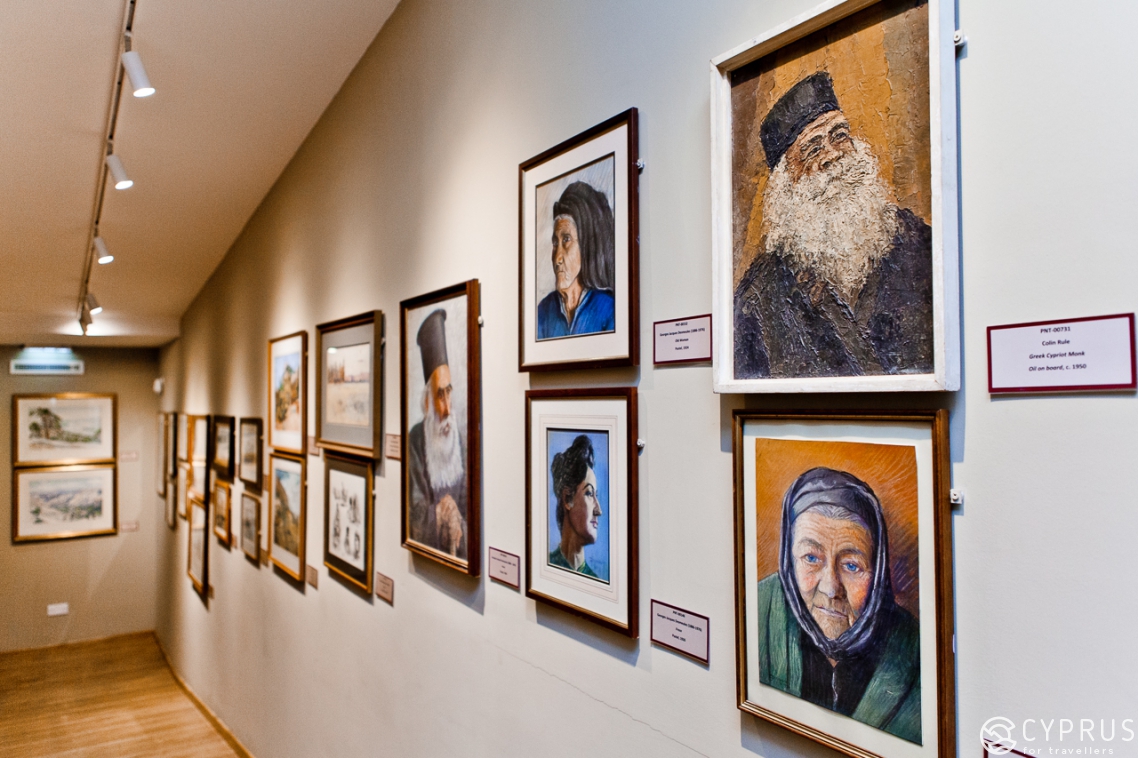
We get quite a few local and foreign researchers who come here to work at our research center. University students (future archeologists, architects and historians) also come here to perform their research. They are mostly interested in our collection of paintings, architectural projects and vintage posters».
Dear friends, if want to go «behind the scenes» of Cyprus, then come to this museum. Its retrospective featuring 300 years of landscape paintings, antique drawings and posters and countless other artifacts will be of interest to everyone — adults and children alike. And book lovers will surely find something worthy in the library.
The museum serves an incredible purpose of connecting its visitors to all the people, who had once lived on the island and left their mark on its history. They may be gone, but the island still remembers them.
Address: 285 Ermu street
Telephone: +357 22300999
Working hours:
Museum of Servis Foundation
Tuesday – Sunday: 9:30 – 17:00, Friday: 9:30 – 20:00 (winter) and Monday – Saturday: 10:00 – 18:00 (summer).
CVAR Center
Tuesday – Saturday: 9:00 – 16:30 (winter) and Monday – Friday: 9:00 – 17:00 (summer).
There is a lounge bar and restaurant Balthazar, which is located on the roof of CVAR. Read more about it here.
Website: www.cvar.severis.org
See you soon!
